Salar De Uyuni is the most visited tourist destination in Bolivia. I recommend to take an overnight bus from La Paz to Uyuni because this will help you to save accommodation cost for the night. The buses are extremely comfortable. You can book your tickets at ticketBolivia.com. The bus ride from La Paz to Uyuni takes about 10 hours. La Paz bus stop is located close to the San Francisco church. Uyuni is small town located in the southern part Bolivia near Chile & Argentina. The town is also served by an airport. The airport is located far from the town and there are daily direct flights to La Paz from Uyuni. I followed the following route for my Bolivia travel.
La Paz — Uyuni — Potosi — Sucre — La Paz
If you are planning to visit Chile after your trip to Uyuni then you can follow this route.
La Paz — Sucre — Potosi — Uyuni — San Pedro de Atacama(Chile)
I arrived at Uyuni at around 5 am. The place was freezing cold. Uyuni is a dry desert so it is very cold during winter months. I didn’t travel during peak winter months but still the temperature was well below 0. I booked my tour through Andes Salt Expeditions. Andes salt expedition is the best tour operator in the region and it is rated very high in Tripadvisor. You can prebook your trip from their website https://www.andes-salt-uyuni.com.bo/. You have to fill in a small form available in their website. They will contact you via email and they will pick you up from you bus station. Someone picked me up from the bus station and took me to a café. The café was a great place to save yourself from the outside weather. There was sufficient heating and they also served nice breakfast and coffee. The café was full of tourists planning to go for their Salt flat trip.
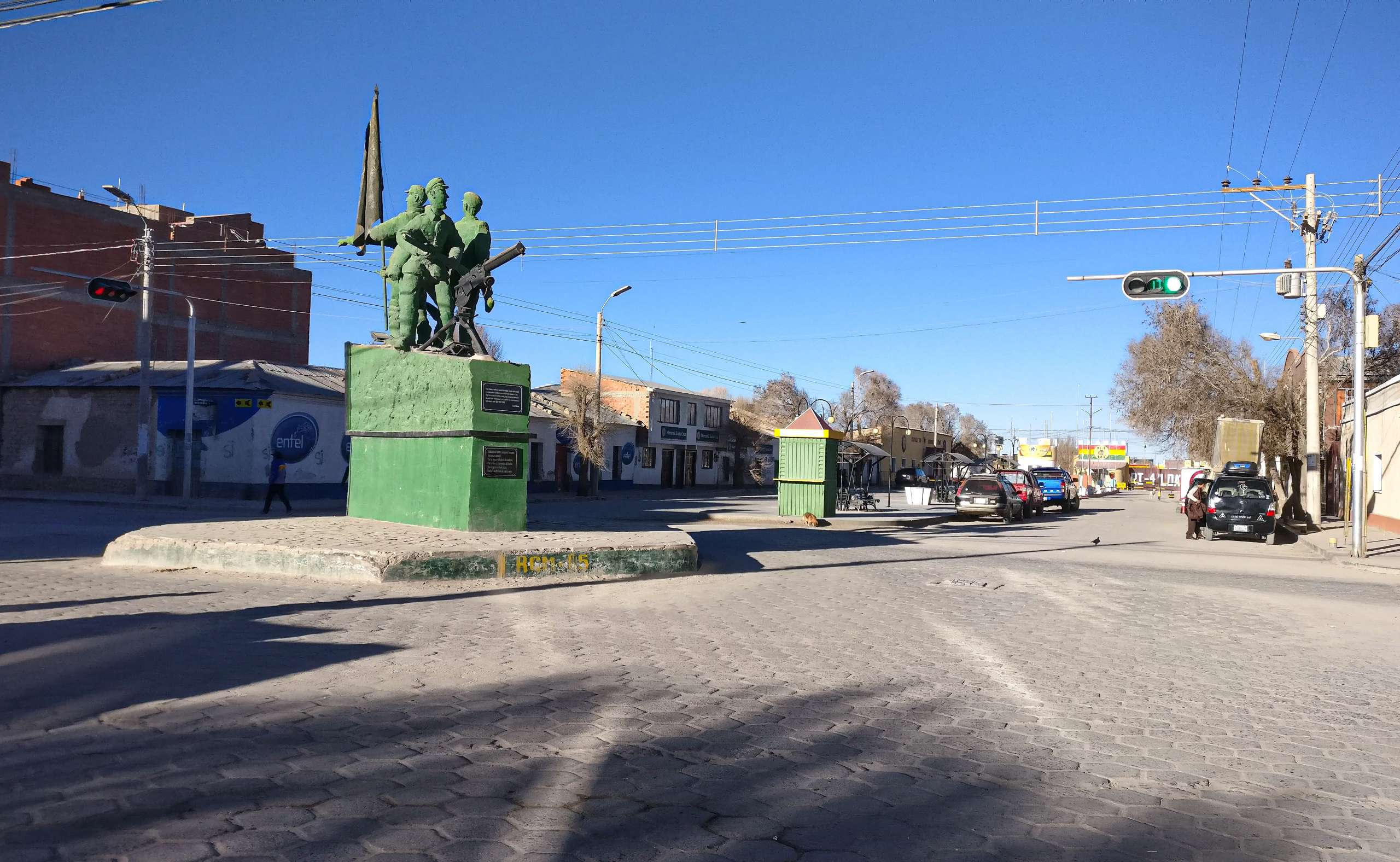
There are different ways to explore the salt flats. You can take 1 day, 3 days or 4 days tour. 3 days salt flat tour is the most popular tour among tourists. You don’t need to pay for the tour beforehand. I paid 130 usd for the 3D/2N trip. I felt the tour was reasonably priced. Most other travel agents were also quoting similar price. At the end of the tour you can either decide to come back to Uyuni or you can decide to proceed to North Chilean town of San Pedro de Atacama. If you are going to Chile then you have to pay 50 Bolivian Sol for the transport cost.
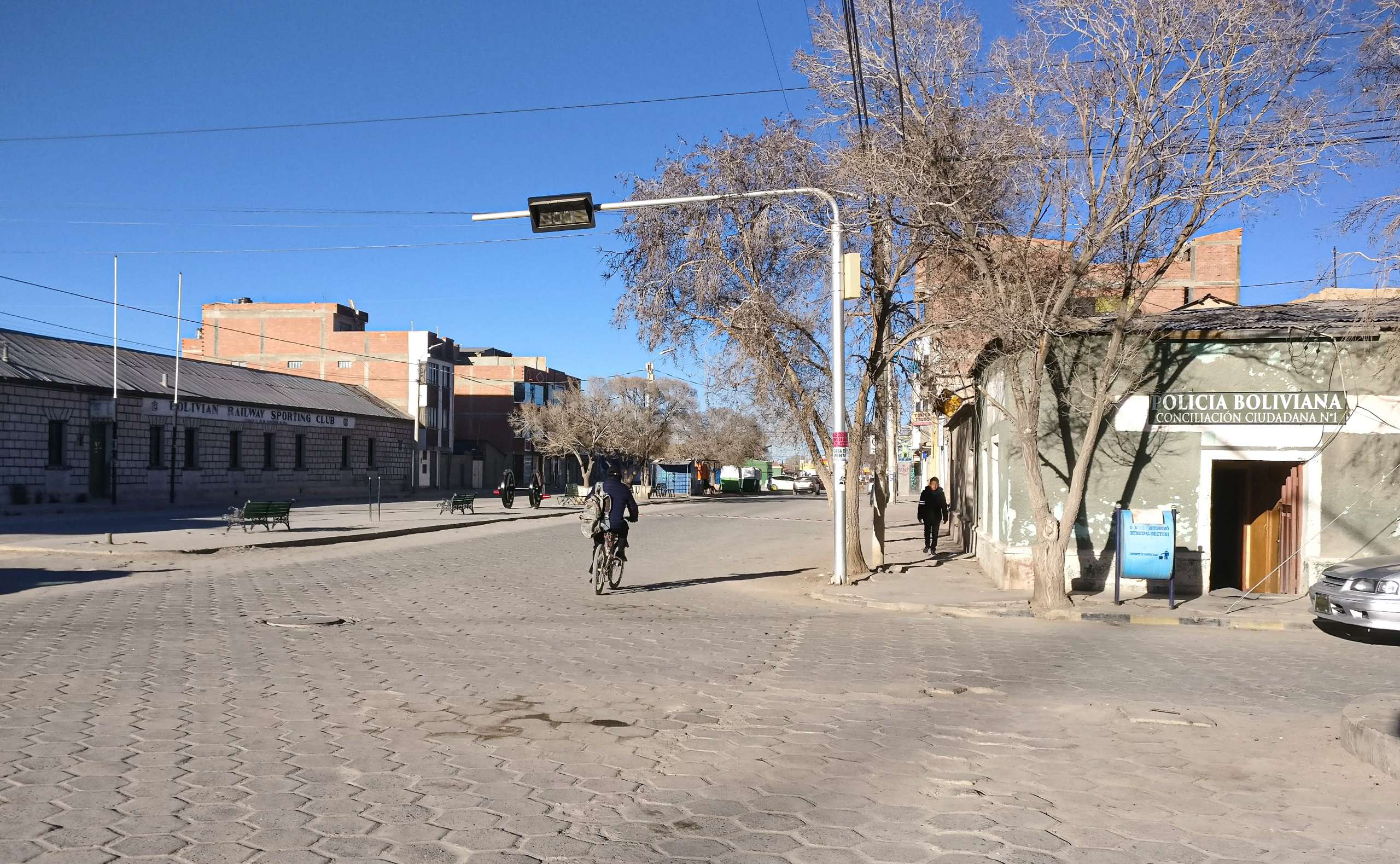
Tour includes
- TRANSPORT IN TOYOTA LAND CRUISER 4X4 WD
- FOOD WITH WINE
- FIRST NIGHT STAY SALT HOTEL DOUBLE Occupancy OR SECOND NIGHT SHARED DORMTORY
- SPANISH GUIDE
- OXYGEN BOTTLE
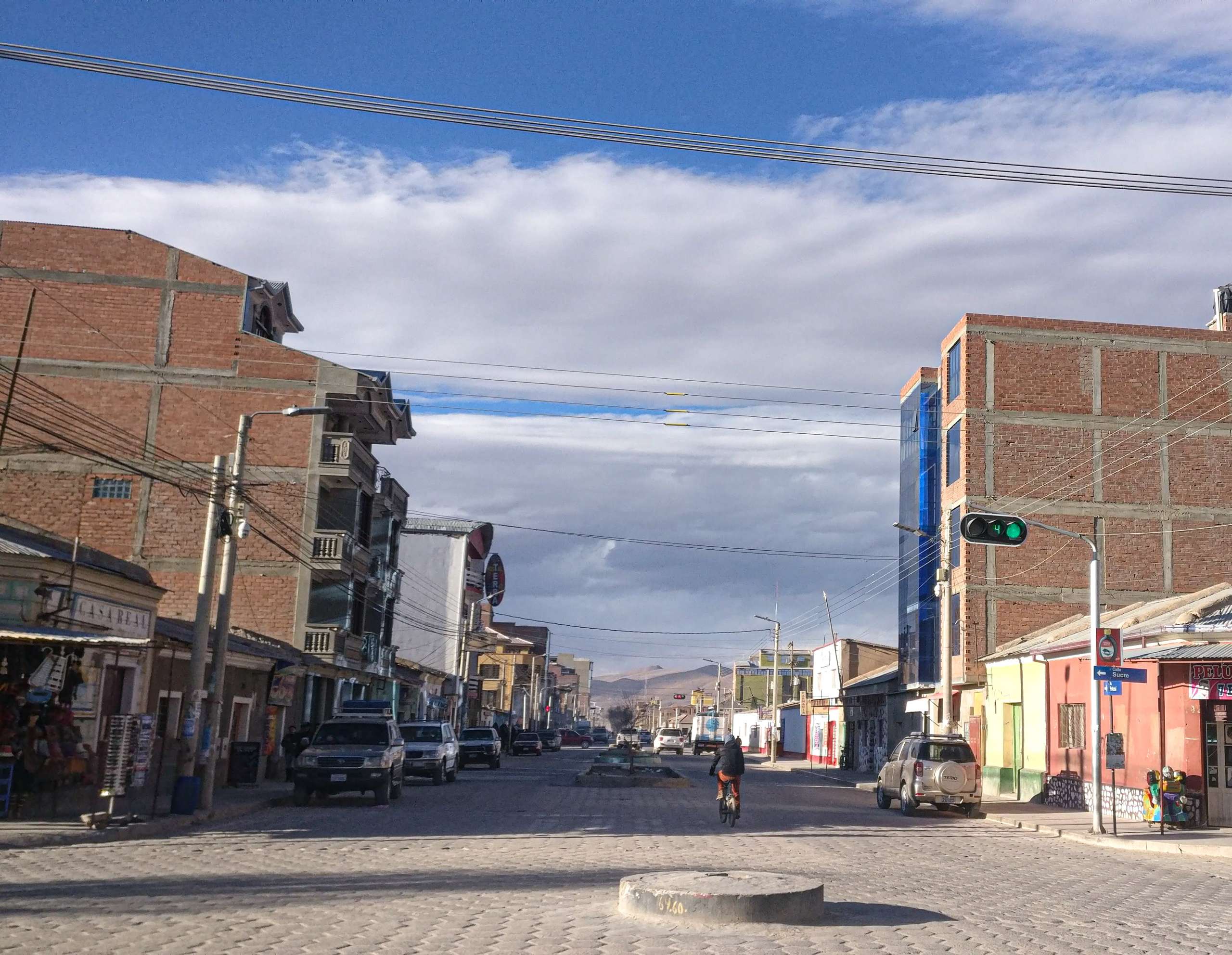
If you want an English speaking guide then you have to pay extra USD 50. I just wanted to explore the place and take some nice pictures. You can always read about the place in the internet. We started our trip at around 10 am. We initially kept our luggages at the top of the Toyota 4*4. I will recommend to have a day trip bag so that you can keep some items with you all the time during your trip. Each car can have maximum of 6 passengers. There were 2 guys from Brazil, 1 guy from Paraguay and 2 guys from France and me. I was fortunate enough to meet Roger who was a backpacker from Paraguay. He can speak Portugese, Spanish and English fluently. He helped me to do basic translation from Spanish. Our driver Gregor was our guide for the entire trip.
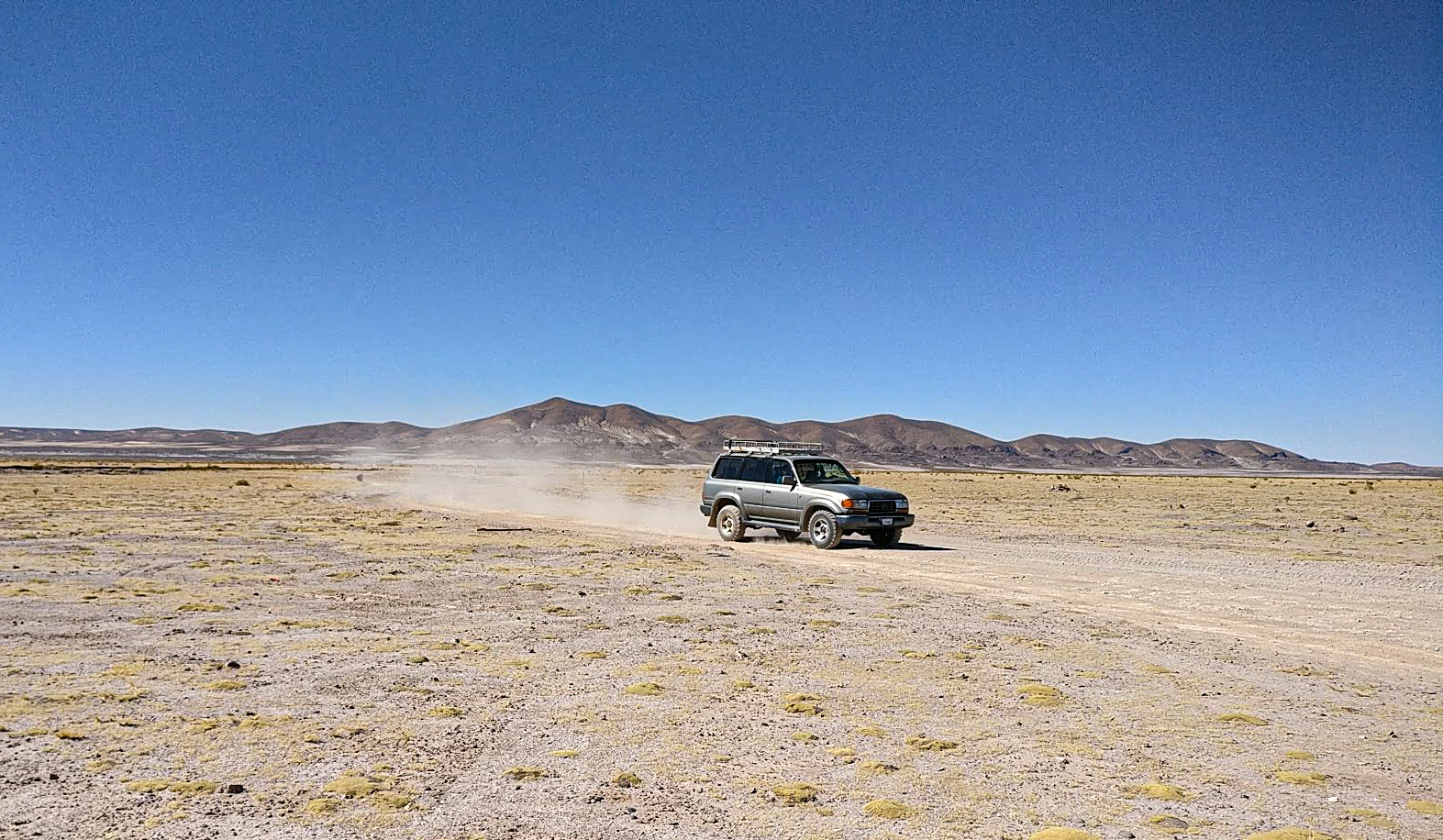
Day 1
Train Cemetery
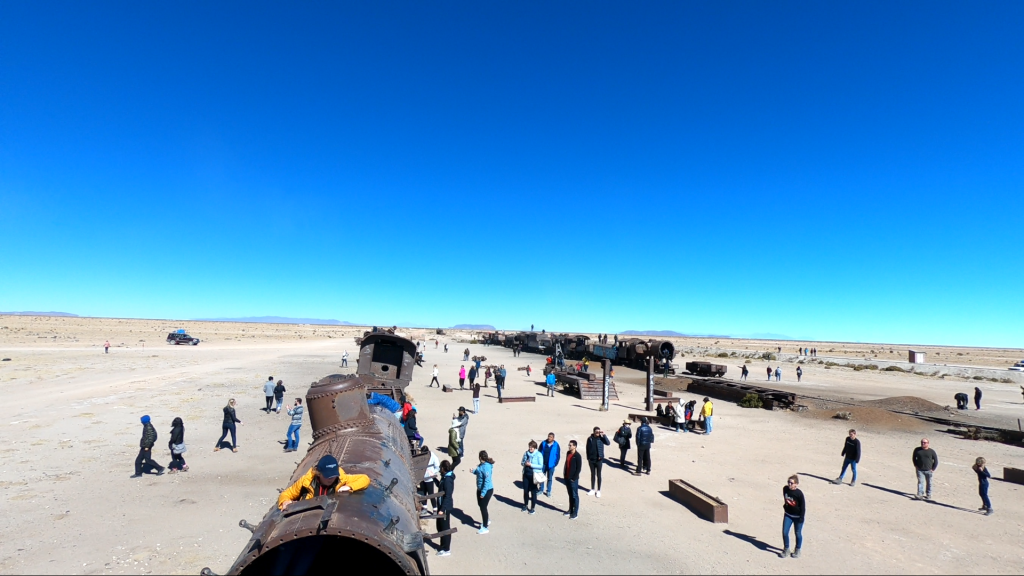
Our first stop of the day was Train cemetery. The cemetery was located about 3 km from Uyuni town. Uyuni was a major mining town in 19th century and the town was used as a distribution hub for minerals. Minerals located in the region are transported to ports situated in the Pacific Ocean by trains. British engineers were able to construct the rails by the end of 19th century. The trains were abandoned when the mining industry collapsed in the mid-20th century. We had a brief 1 hour stop at the location for photography. I saw most people climbing on top of the train In order to take some pictures. I would strongly recommend not to climb the train for photographs. I felt it is very dangerous and if you fall you might end up getting seriously injured. The trains are deteriorating very quickly and it is spread over a huge section. There is also plan to convert the entire region into a museum. The place was full of tourists and there was queue at some spot for photographs. I climbed one section of the train and felt very unsafe and immediately came down. After spending an hour at the place we went back to Uyuni town. Train cemetery is a very unique place and it should not be missed during your trip to Uyuni.
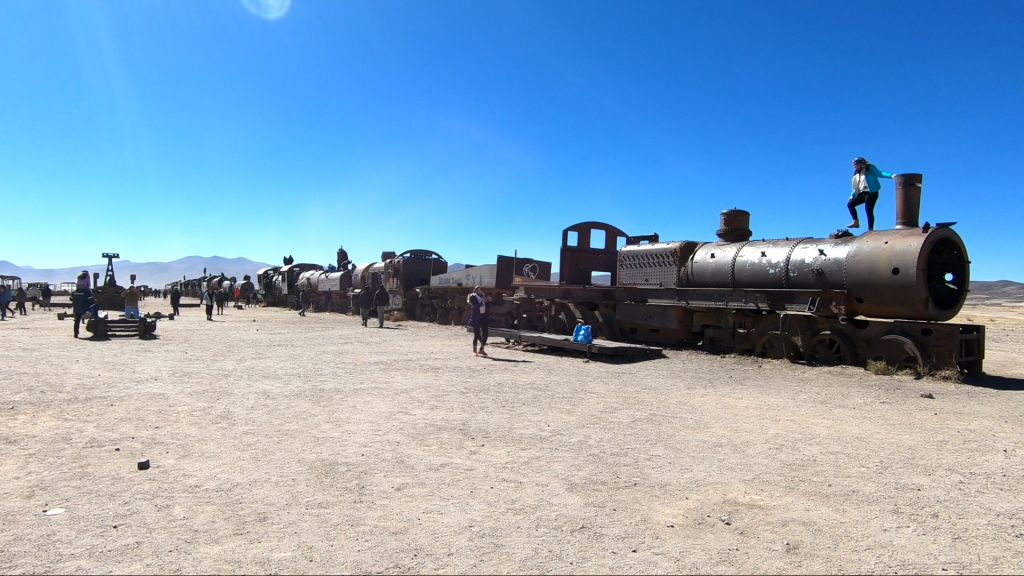
Colchani Salt plant and Museum
After a short 1 hour ride we reached Colchani salt plant. If you are interested in methods of salt extraction and iodization, then this is a must visit location. The main plant for the iodization of salt in Bolivia is situated at Colchani. The town also has a small museum dedicated to salt production. You will find number of stores selling handicrafts around the town. I tried some nice grilled llama meat from the street food stall. Most salt produced at Colchani is used for consumption of Bolivian people.

Our next stop of the trip was eye of the salt. On our way to eye of the salt we crossed huge piles of salt pyramid. Water from the eyes of the salt comes out at very high pressure. We stopped at this place for some beautiful photographs. At this location you will get the real feel of salar de uyuni. There is just salt everywhere in all direction. The salt flat covers almost 10000 sqkm area and it is situated at an average altitude of 3600m.
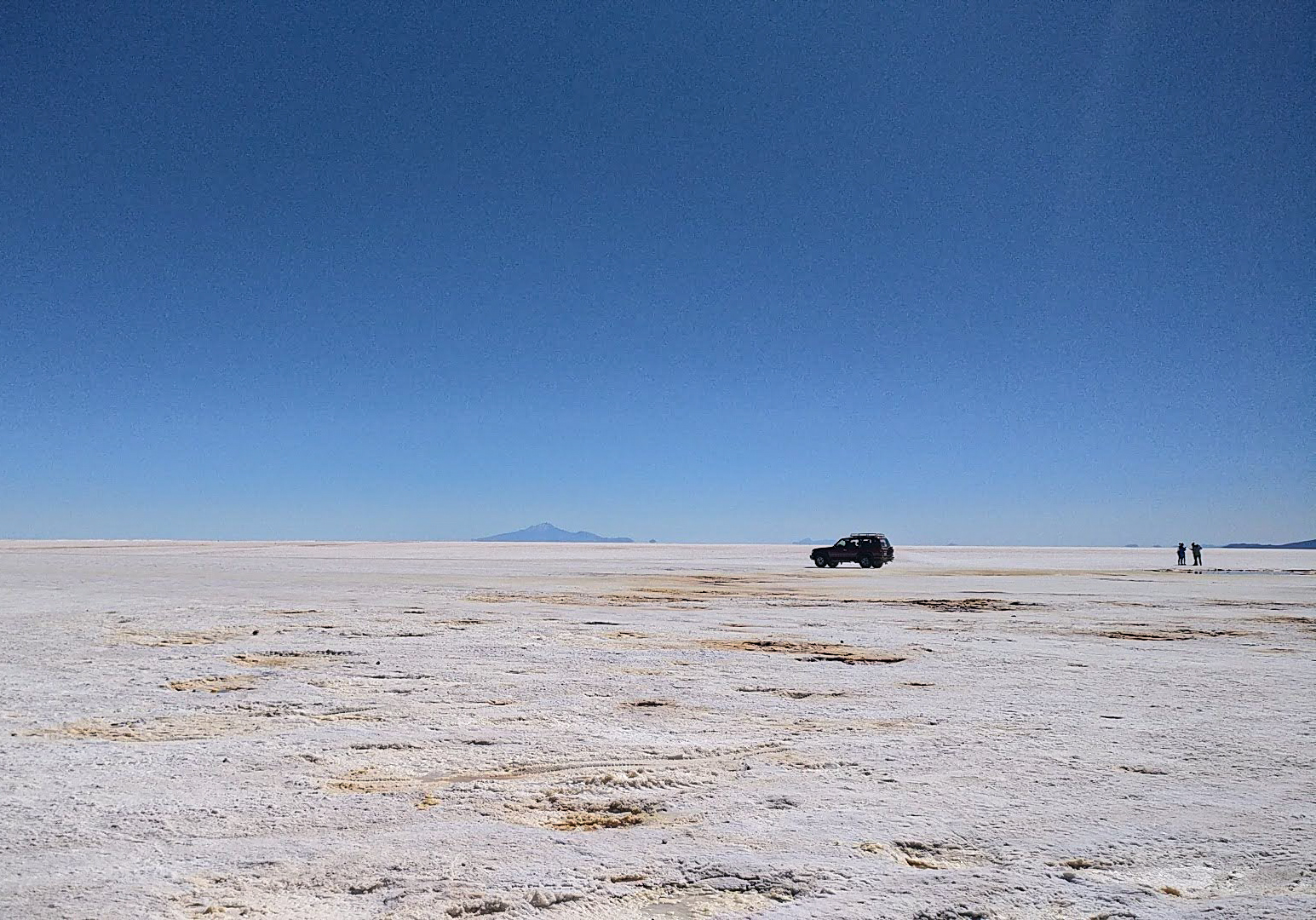
Hotel Playa Blanca
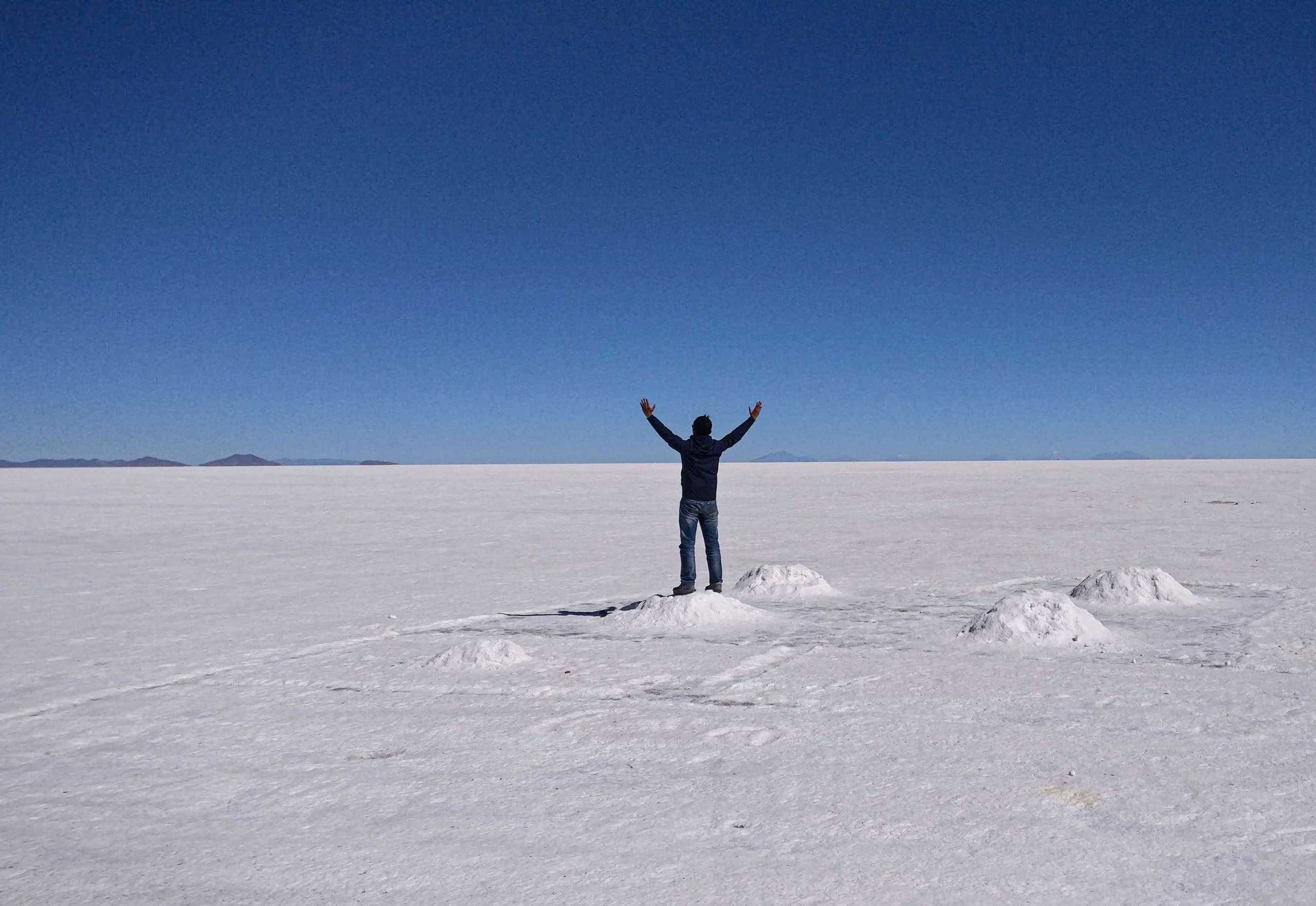
Our next stop was Hotel Playa Blanca. We stopped here for almost 1.5 hours for lunch and sightseeing. The hotel is completely made from salt blocks. The lunch was absolutely brilliant. I tried some lama meat with eggs and veggies. The hotel was established in the year 1993. Pollution caused by mismanagement led to the closure of the hotel in the early 2000. Currently the hotel is used to organize lunch for tourists.
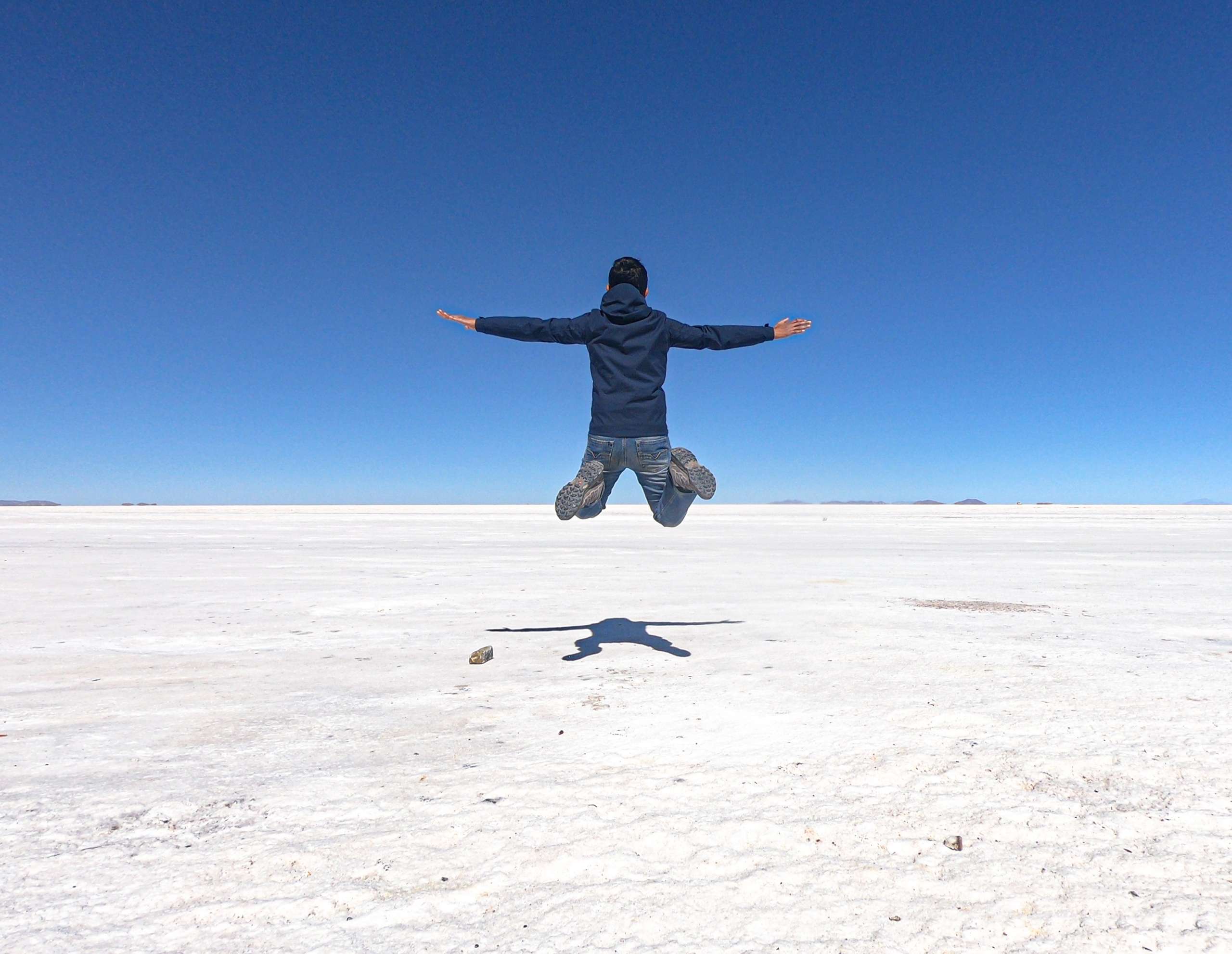
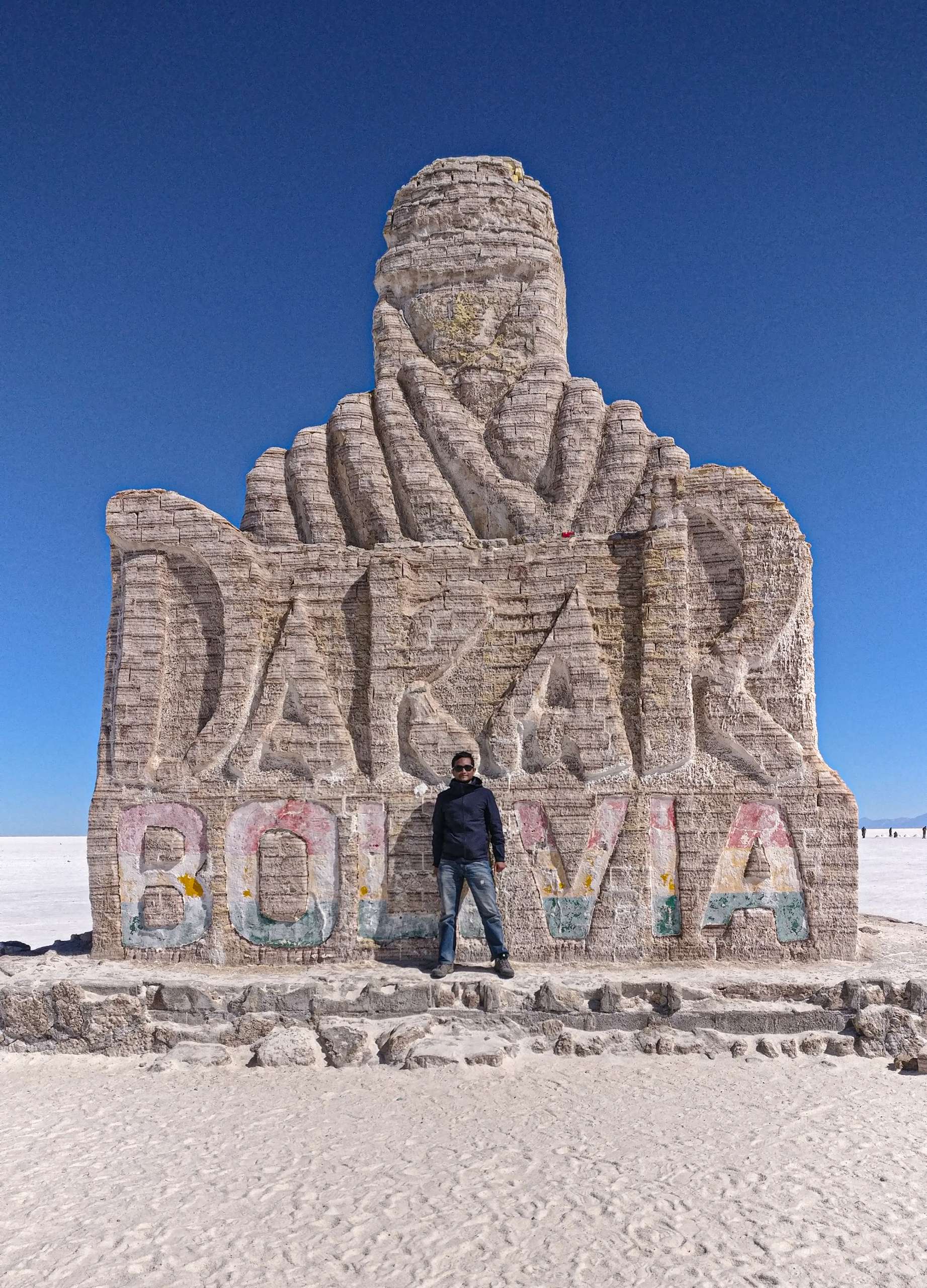
We took some photographs at the Dakar monument located outside the hotel. The monument is completely made from salt blocks. The monument is a popular place among tourists for photography so be prepared to queue for at least 10 minutes. Flags of the world monument is another popular place for photography. Here you can pose for a picture with the flag of your country. The place is full of flags from different country. If you can’t find flag of your country, then you are free to put your country’s flag at the monument.

Our next stop was Incawasi island. Incawasi island is situated about 100 km from Uyuni. Uyuni salt flat is a great place to learn how to drive. You can drive in any direction and there is vast emptiness everywhere. Our driver stopped in the middle of nowhere and encouraged us to take some nice photographs. He brought some dinosaur toys along with him and helped us take various optical illusion shots. We spend about an hour taking various kinds of crazy shots. Our driver Gregor was an excellent photographer and he helped us a lot in positioning and placement for the photograph. After another 30 minute drive we reached Incawasi island.
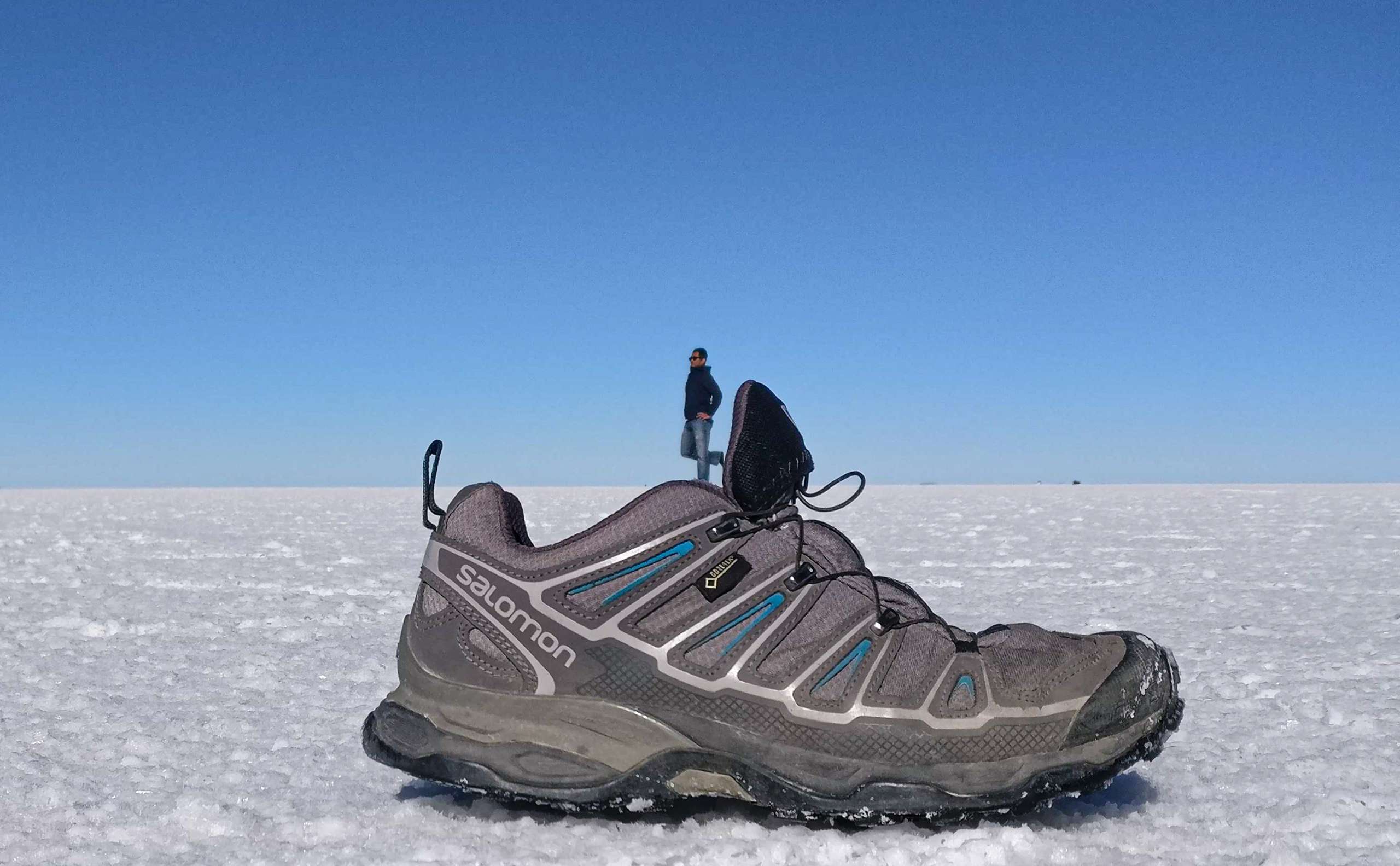
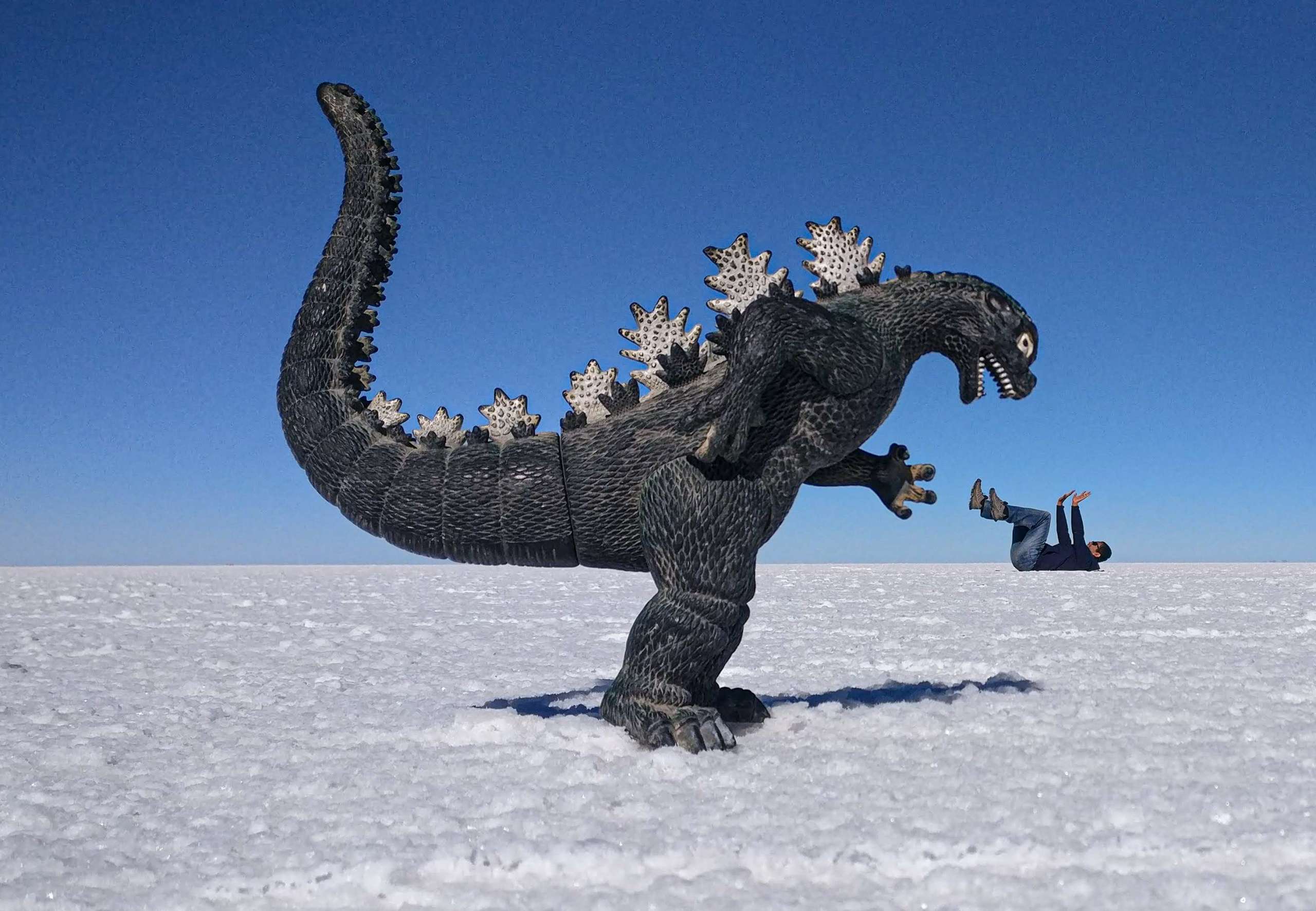
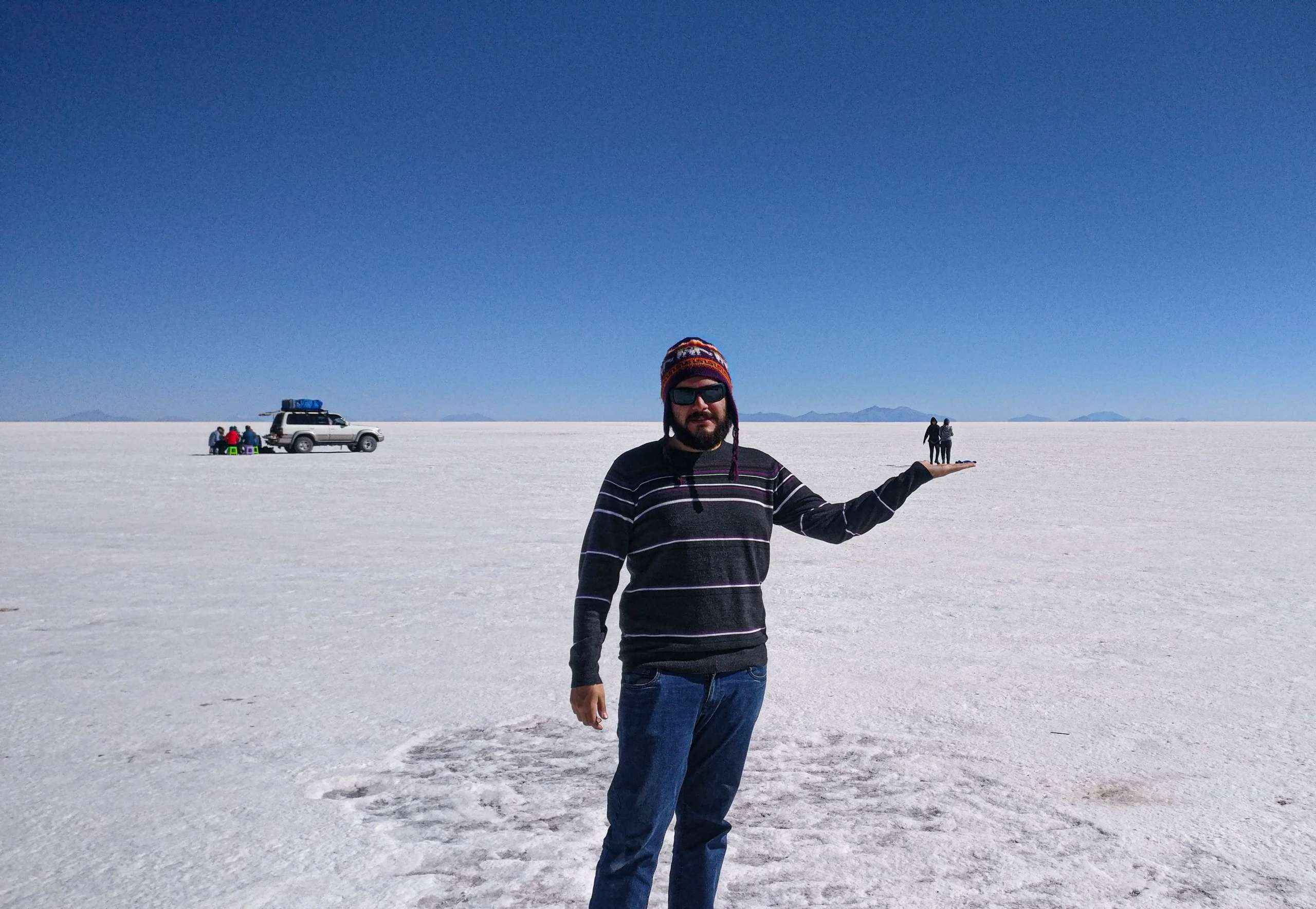
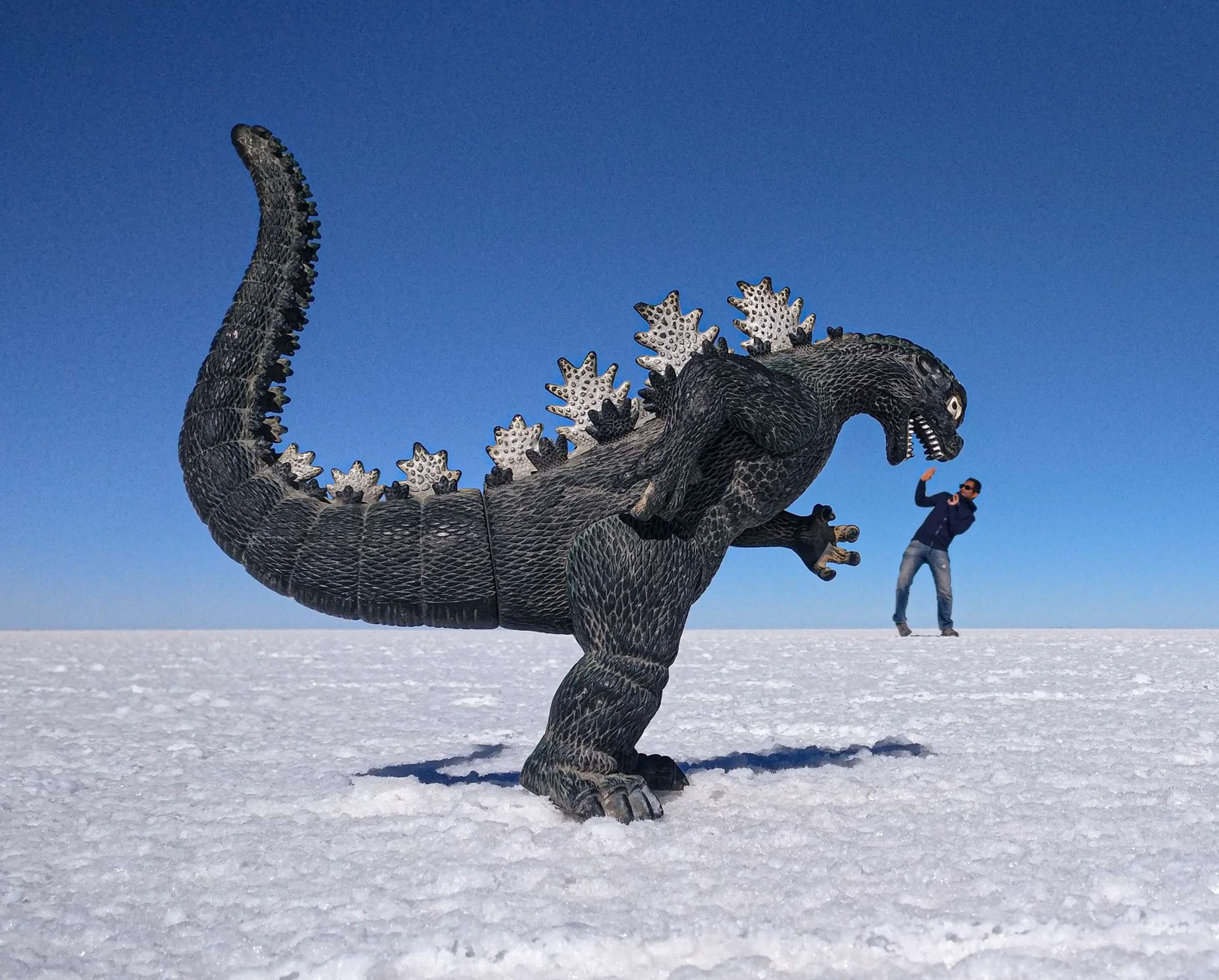
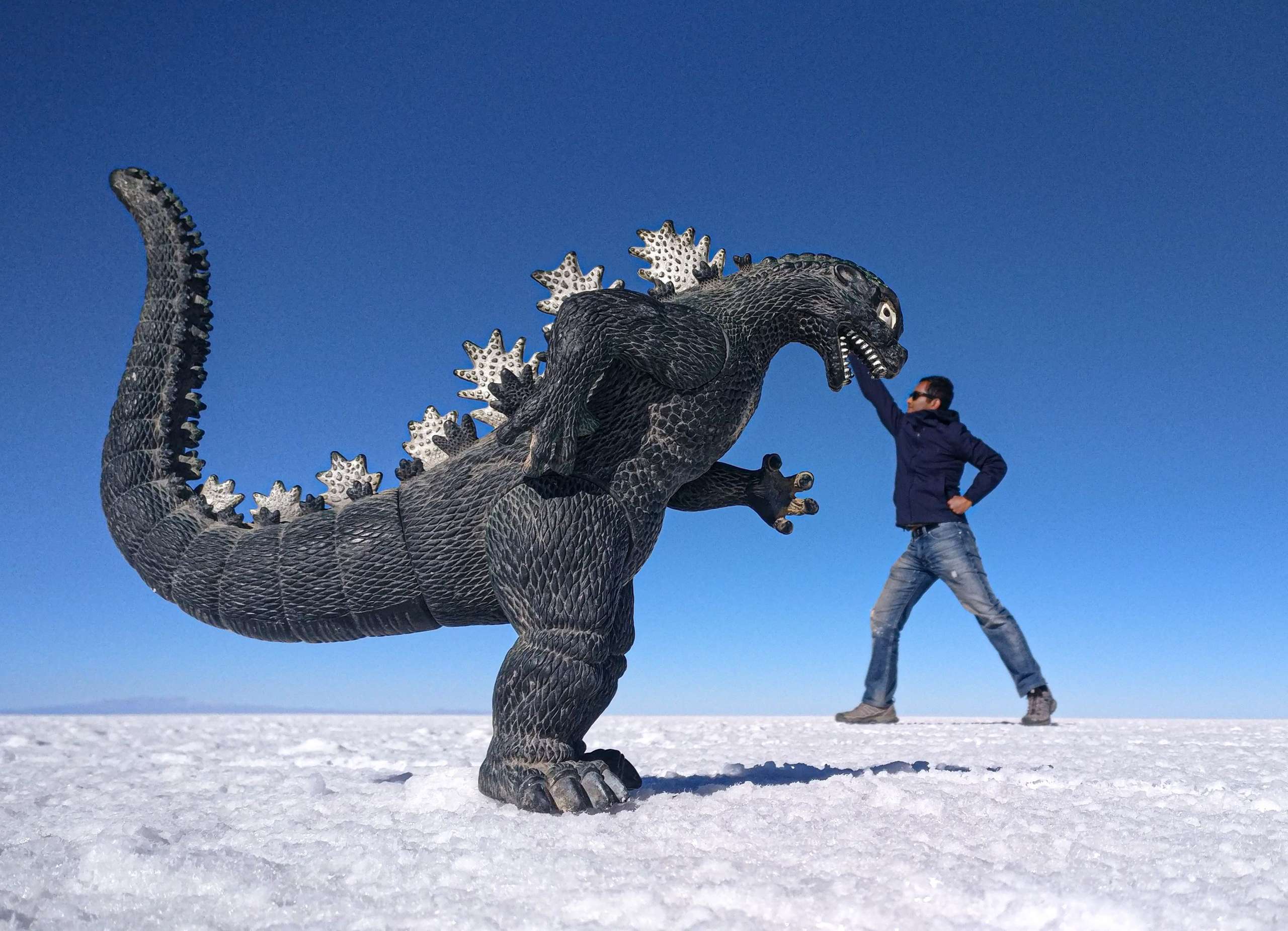
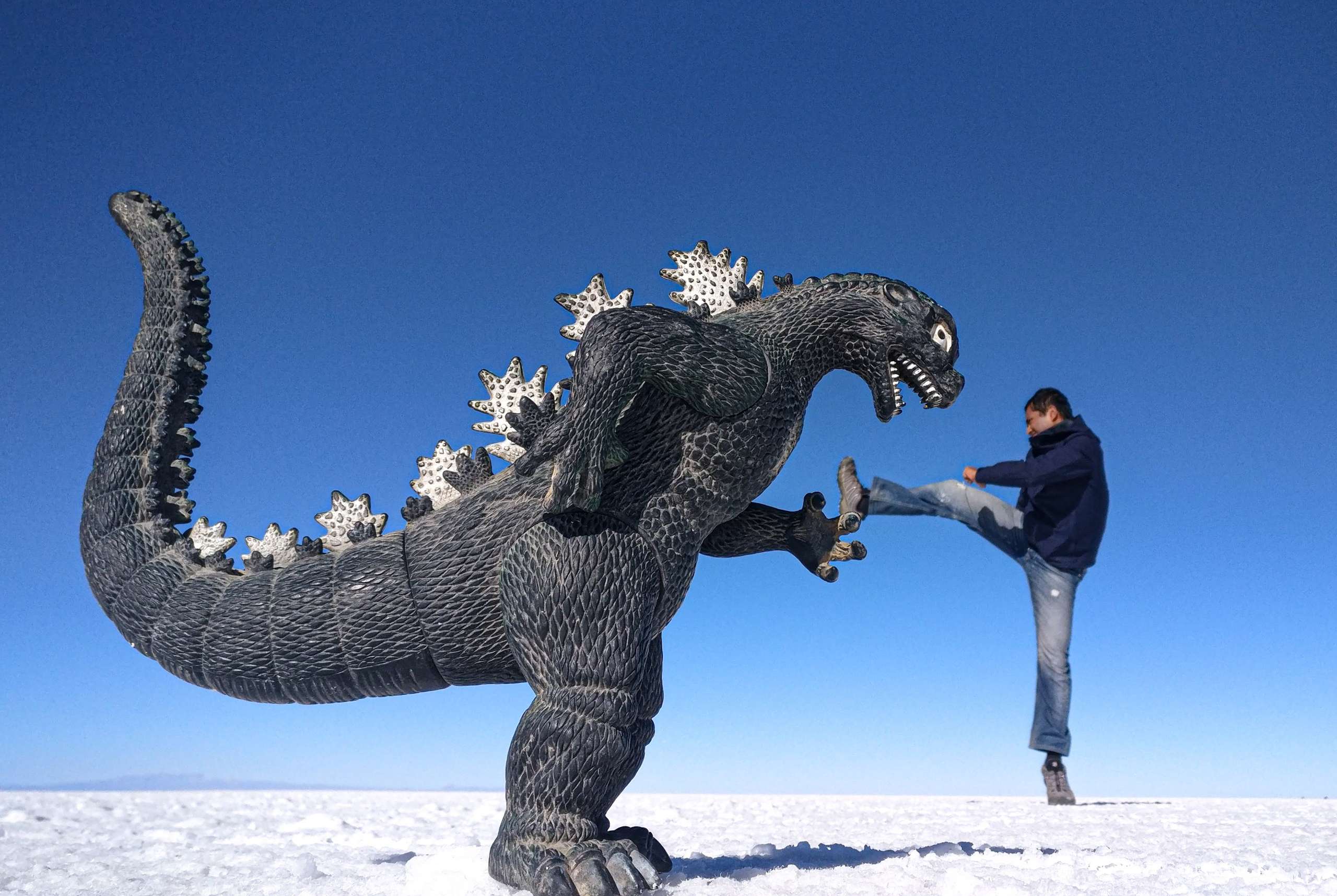
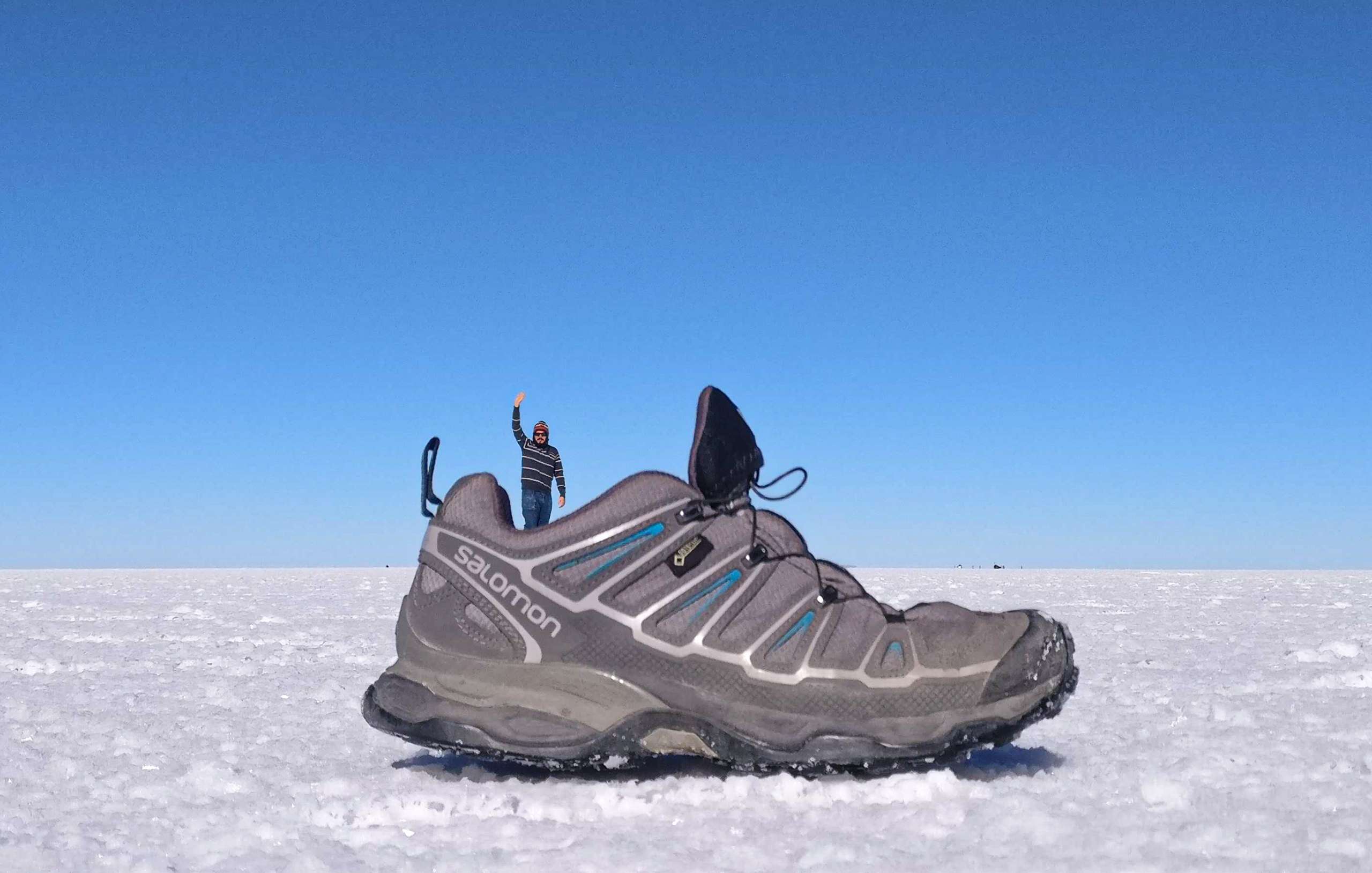

Incawasi island
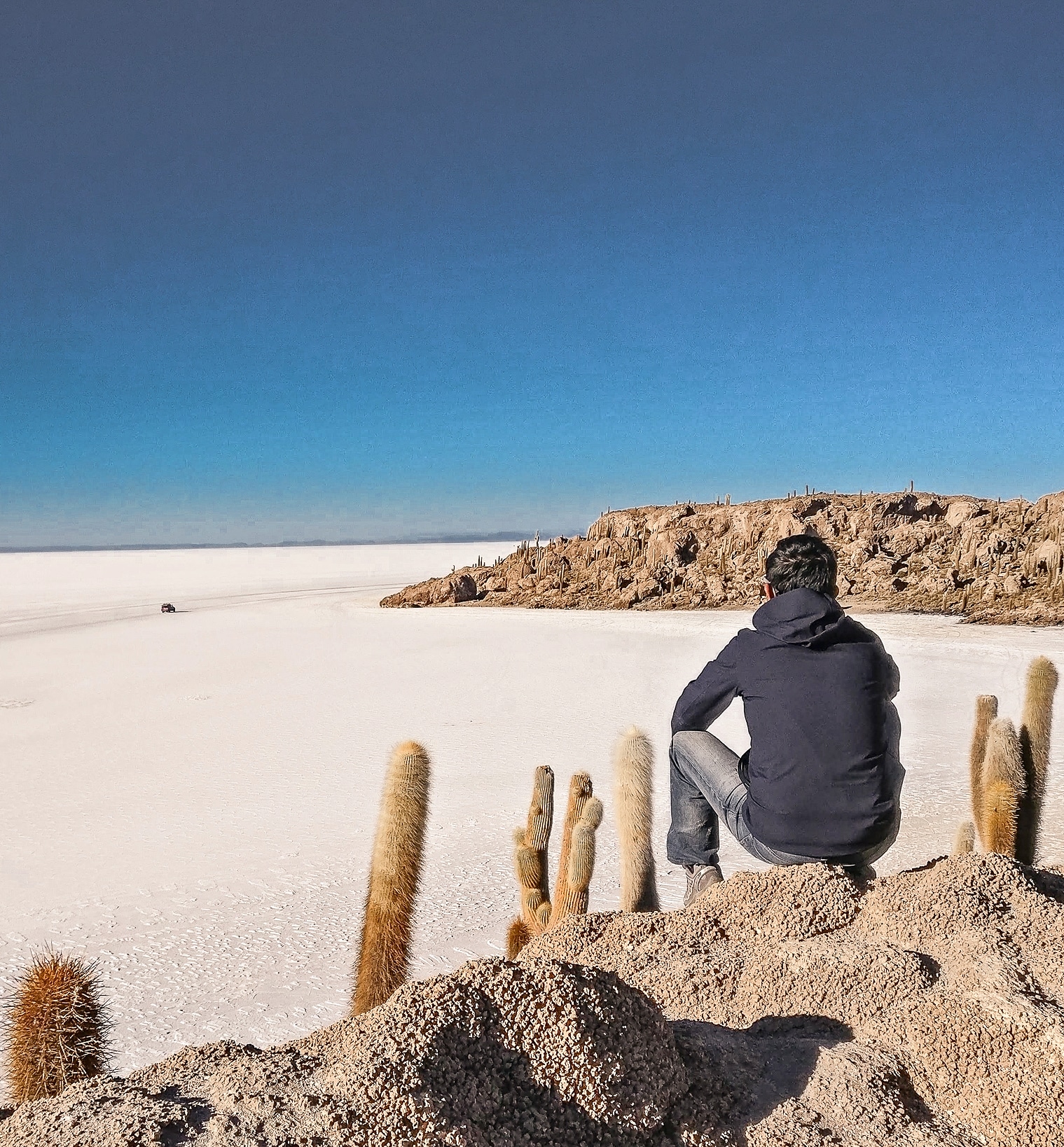
Incawasi island is located at the center of the Salar desert. The desert island is situated at a distance of about 100 km from Uyuni. Incawasi island is a small hill in the middle of the desert. The hill consists of cactus trees and different types of rock formation. Incawasi Island is an important stop for the day trip around salt flat. The entrance fee for the island was not included in the tour and we had to pay 30Bs for the same. Different sections of the island can be accessed by following marked trail. I climbed to the top of a rock and got some great shots of Uyuni desert. The highest point of the island is situated at 20m above the salt flat. The island provides great views of entire Uyuni salt flat. Incawasi island is a great place to enjoy 360 degree view of the Uyuni salt flat. The island is covered with giant cactus trees of height more than 10ft. You can still spot some coral life on the island because Uyuni salt flat was part of a lake.
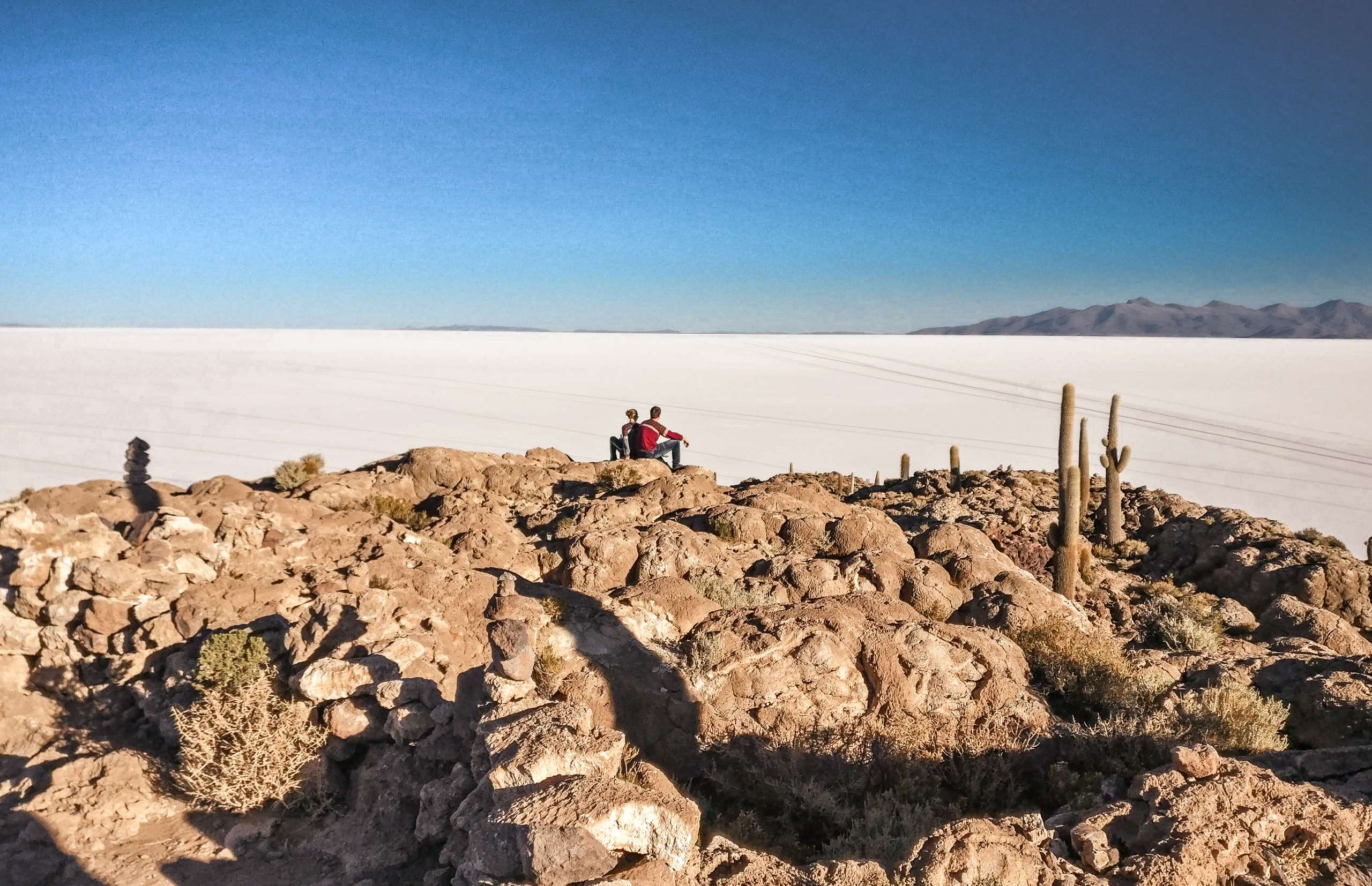
Stop for Sunset viewing

Our hostel at San Juan was about 90 minutes drive from Incawasi island. We stopped at the middle of Uyuni desert for the sunset. The sunset was extremely beautiful. The sky was blue in color with no trace of clouds. The bright orange color sunrays made the border between the sky and ground completely invisible. The sunray reflected from the salt flat created light blue color. The mountains behind the salt flat were colored in red because of the direct sunlight reflection. The orange color sky and the white salt desert were complementing each other perfectly. The sun went down and we started our journey to the hostel. We crossed the salt flat and entered paved roads. I was sitting in the front seat of the car. I saw immediately two vicunas crossing the road. We entered the dry desert of the Andean mountain and you will find lot of vicunas in this region. Vicunas are protected animal by the government. It is illegal to kill Vicunas for their meat.
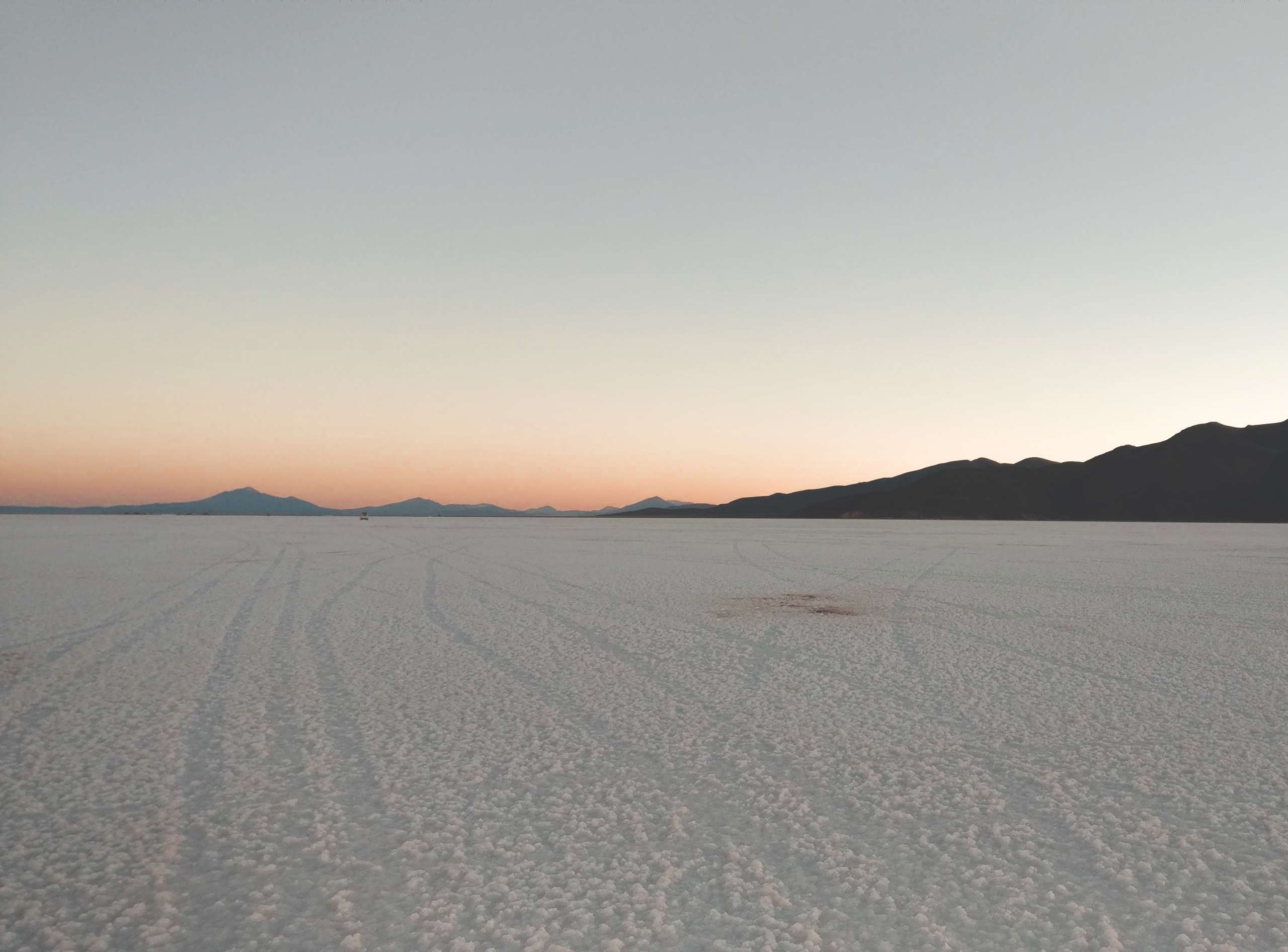
San Juan Salt Hostal

It was completely dark when we reached San Juan Salt Hostel. The hostel is situated in the middle of nowhere. We were assigned double room for the accommodation. The shower facility was available at the hostel at an additional charge of 10 Bs. We played UNO cards with some other tourists from South America. We went out of our hostel for stargazing. There was no trace of clouds and the entire sky was lit up with stars. I couldn’t capture the sight because I didn’t have a powerful camera with me. Uyuni is situated at an average altitude of 3700 m and it gives perfect opportunity for stargazing. I will strongly recommend to bring a professional camera if you are planning to capture the beautiful sight. I took my torch with me for the trip and it was very helpful. Dinner was served at 7.30 pm. The meal consists of soup, grilled chicken, eggs and vegetables. I will strongly recommend there is no need to bring any extra food during your 3 days tour. The quantity of the serving was more than enough and we were full after each meal.
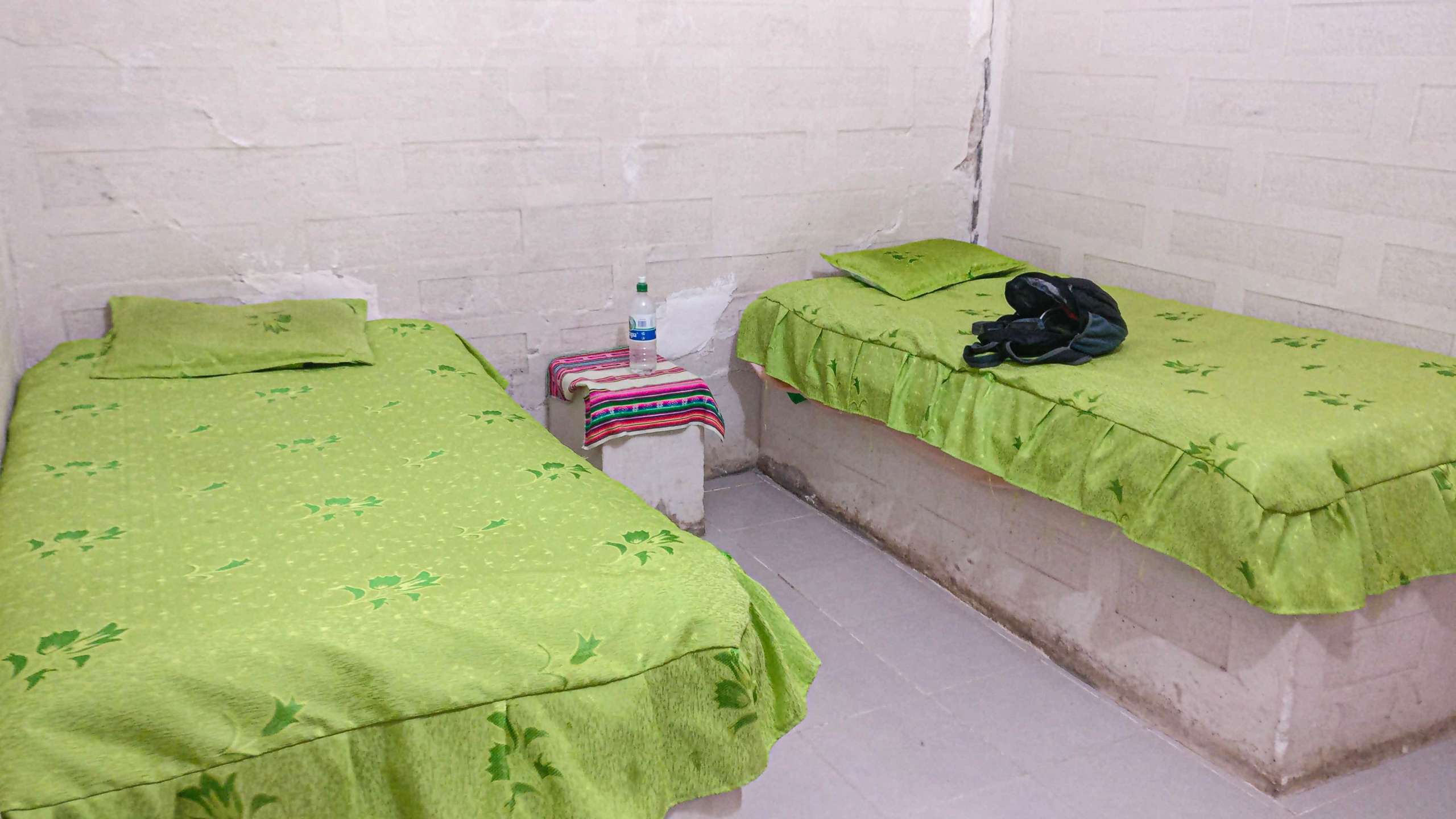
Day 2
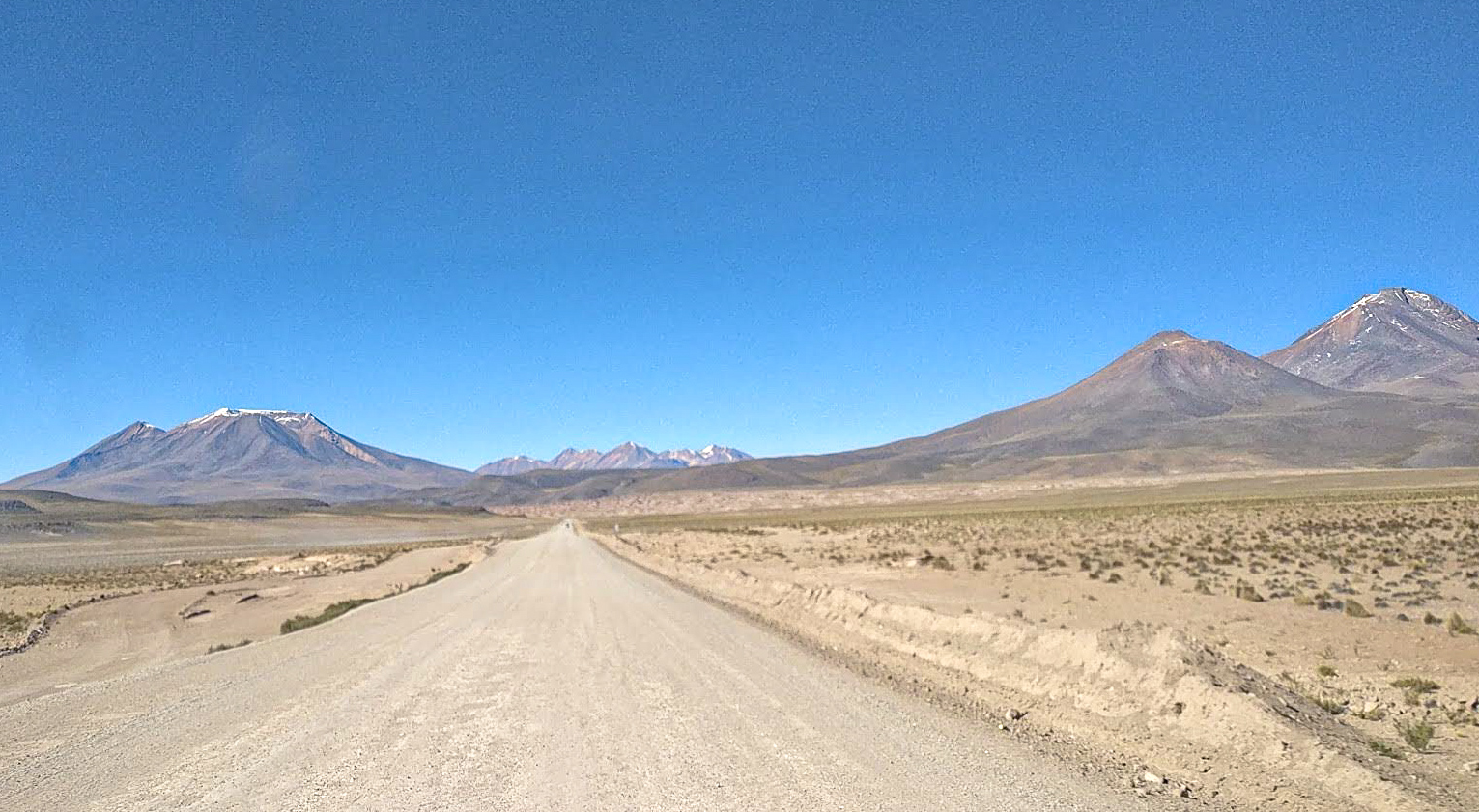
We started our tour at around 7 am. I had a good sleep the night before and I was all set to start the second day of the trip. Our guide told us that this is the best day of the trip because it involves number of stops and we will cross some amazing terrain. We got our breakfast served at around 6.30 am. We got some eggs, banana, bread and cereals for our breakfast. Some members of our group wake up late and they had to pack their breakfast.
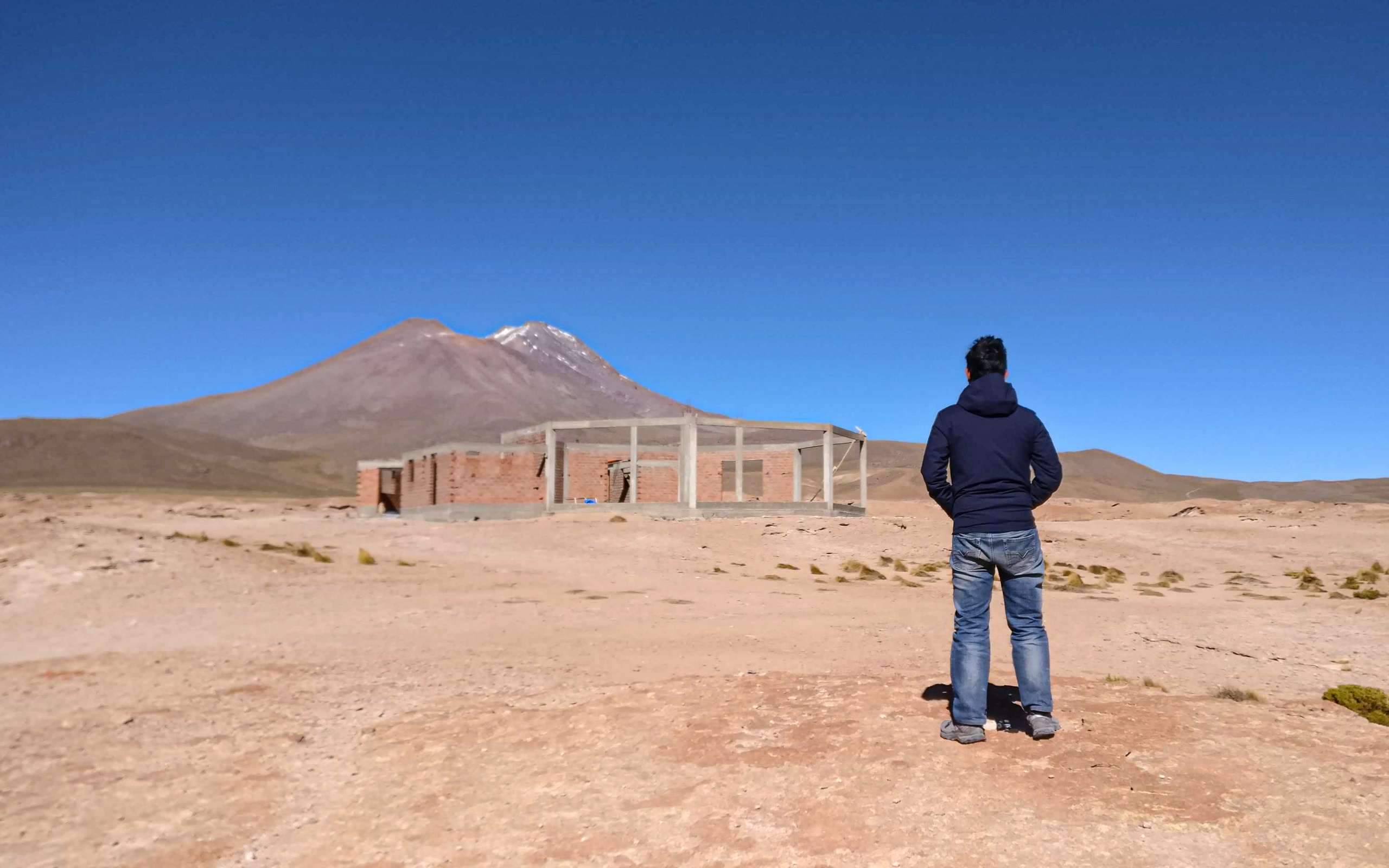
Ollague Volcano
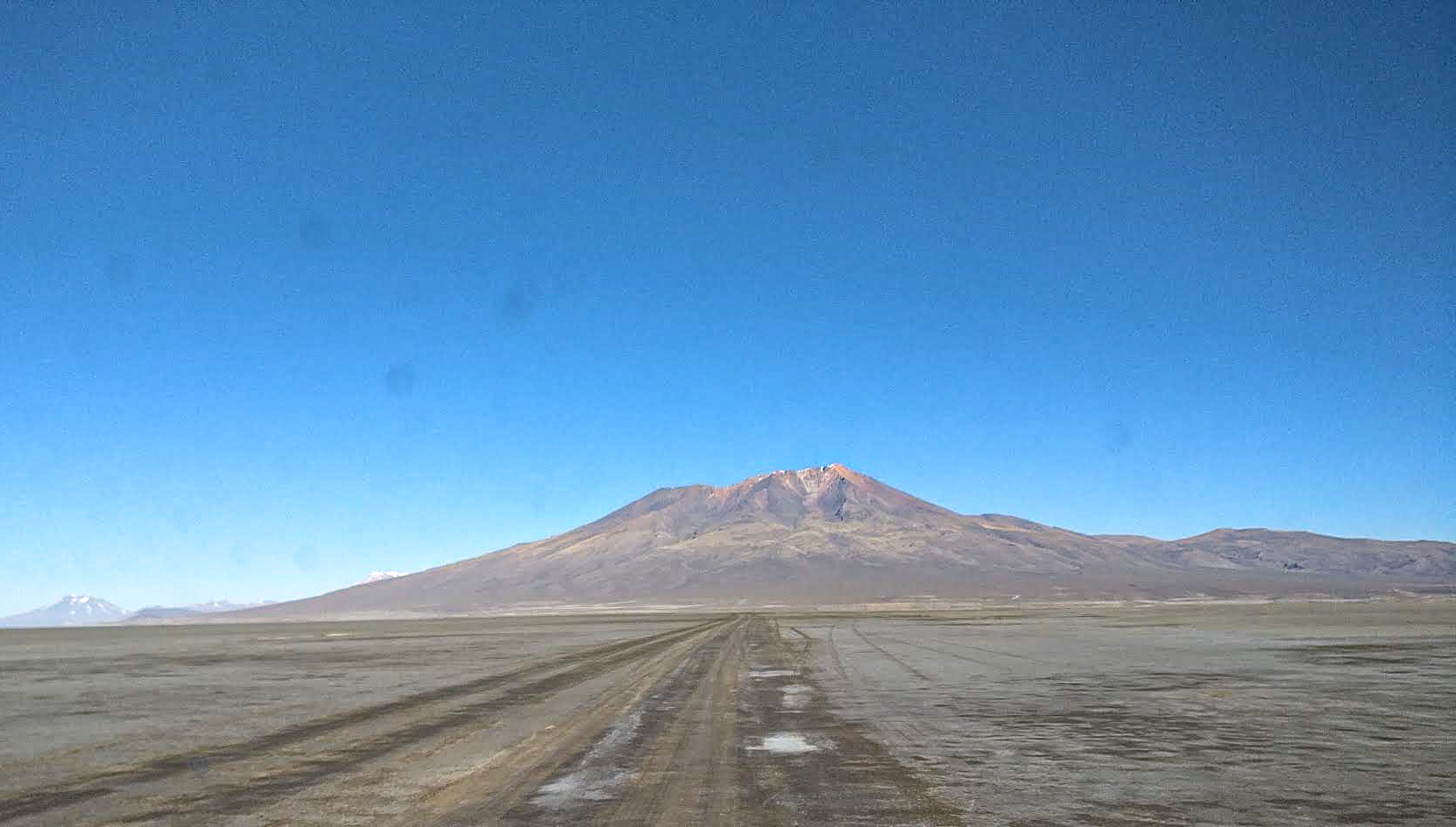
Our first stop of the day was Ollague Volcano. We stopped near a railway track and took some nice photos of the surrounding area and the volcano. Ollague volcano is part of the central volcanic zone located near Chile and Bolivia border. The terrain was very dry and you will not see snow even during winter months. We spotted number of mining trucks around the region. The desert region which borders Chile, Bolivia and Argentina is called the Lithium triangle. Around 90% of the world’s Lithium can be found here.
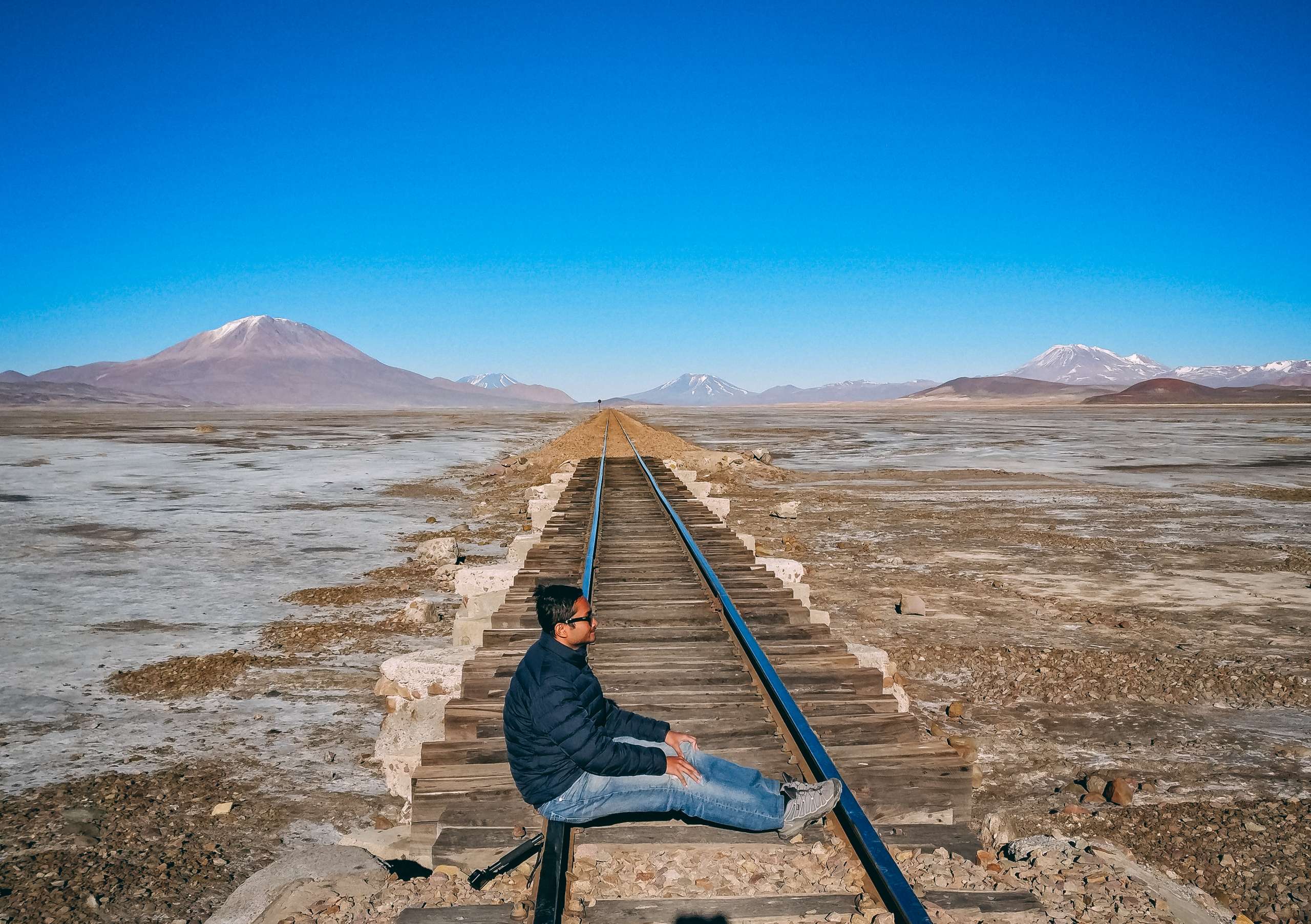
Canapa Lagoon
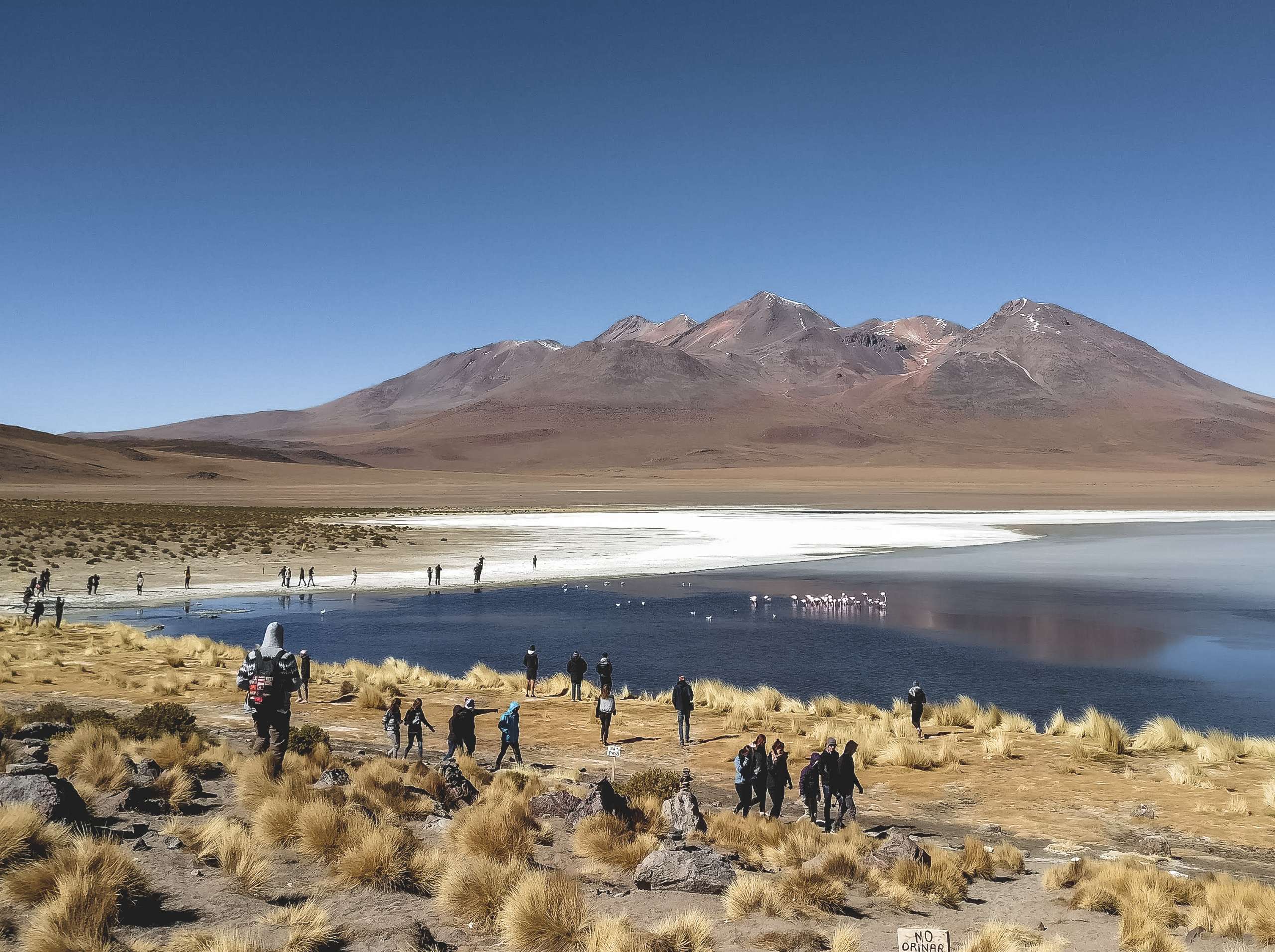
There was no proper road in this region. We were driving along the paved roads for most of the time. There are number of volcanic mountains around the region. The height of the mountain ranges between 4500m-6000m. Ojos del Salado is the highest volcano in the world. The height of the mountain is 6900 m and it is located in the Chilean side of the volcanic zone. During our trip to Canapa Lagoon we spotted group of Vicunas. Canapa lagoon is a salt water lagoon. Canapa lagoon is surrounded by Canapa volcano. The lagoon is situated at an altitude of 4200m. Canapa lagoon is small in size but it was full of flamingoes and Andean Geese. We also spotted a rare Andean mountain cat near the lake.
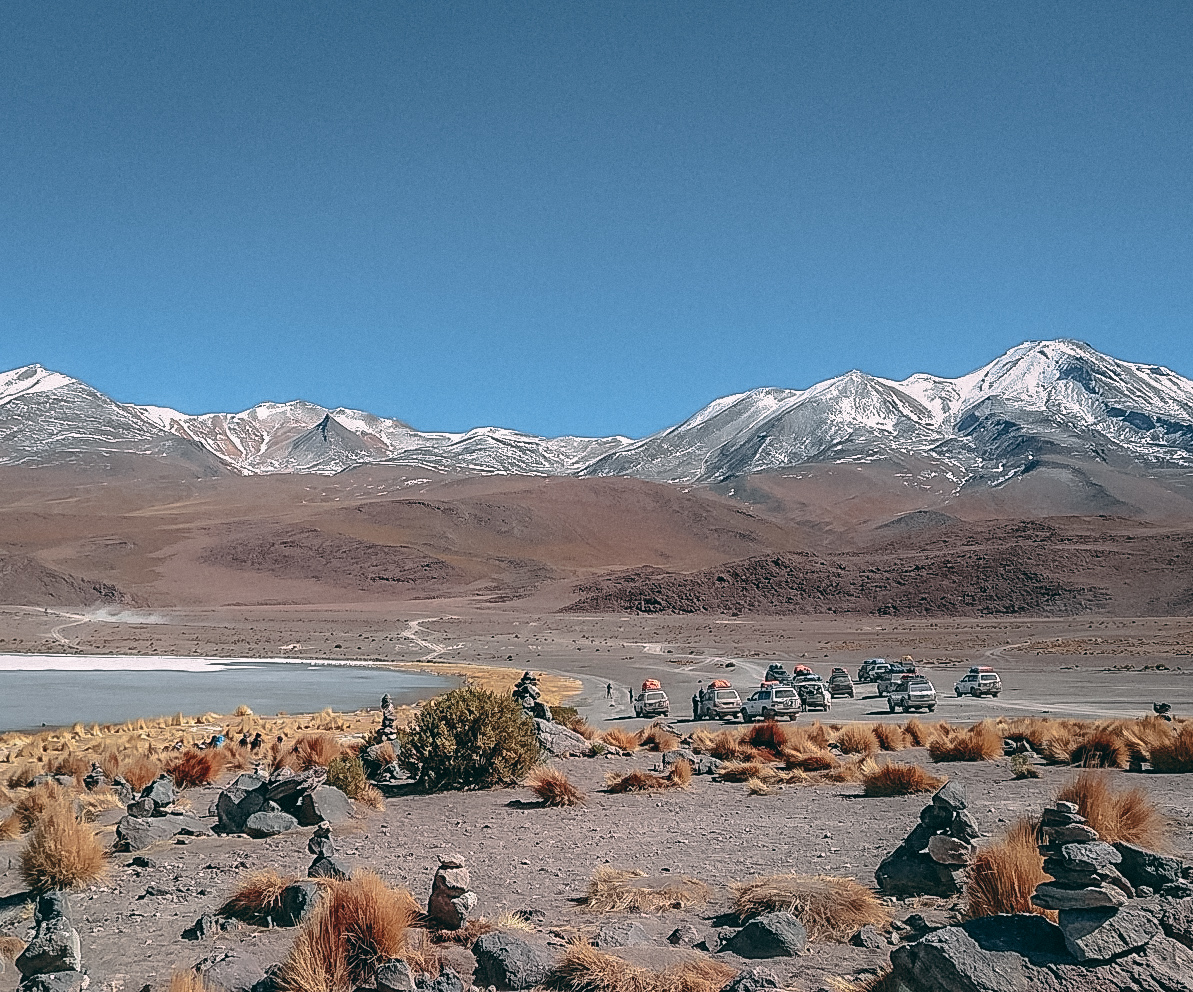
Laguna Hedionda
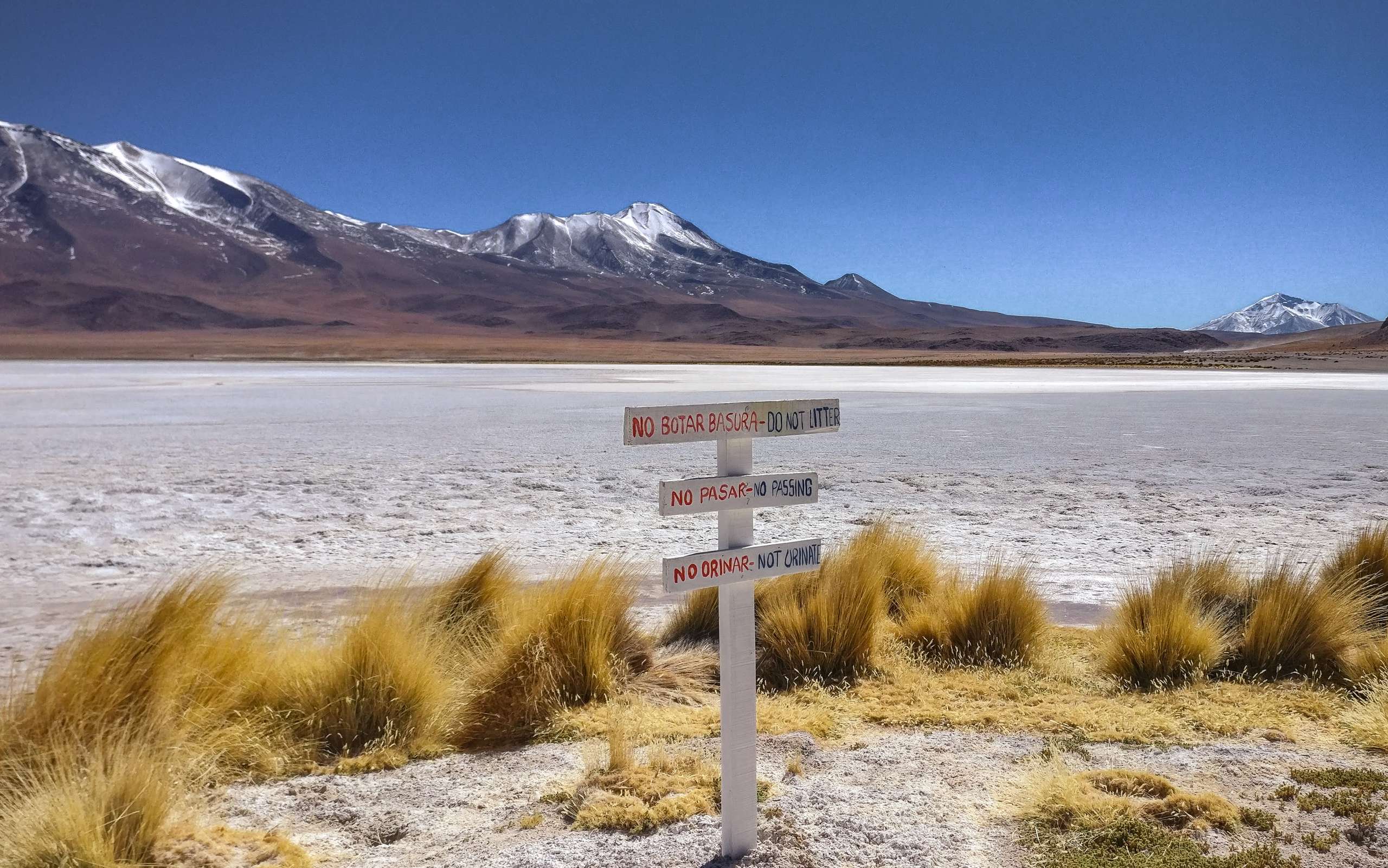
We reached Laguna Hedionda after 1hour drive from Canapa Lagoon. We stayed at the lagoon for about 1.5 hours and we had our lunch at this location. Laguna Hedionda is famous for pink flamingoes. I was able to spot two pink flamingoes and took some nice photos.
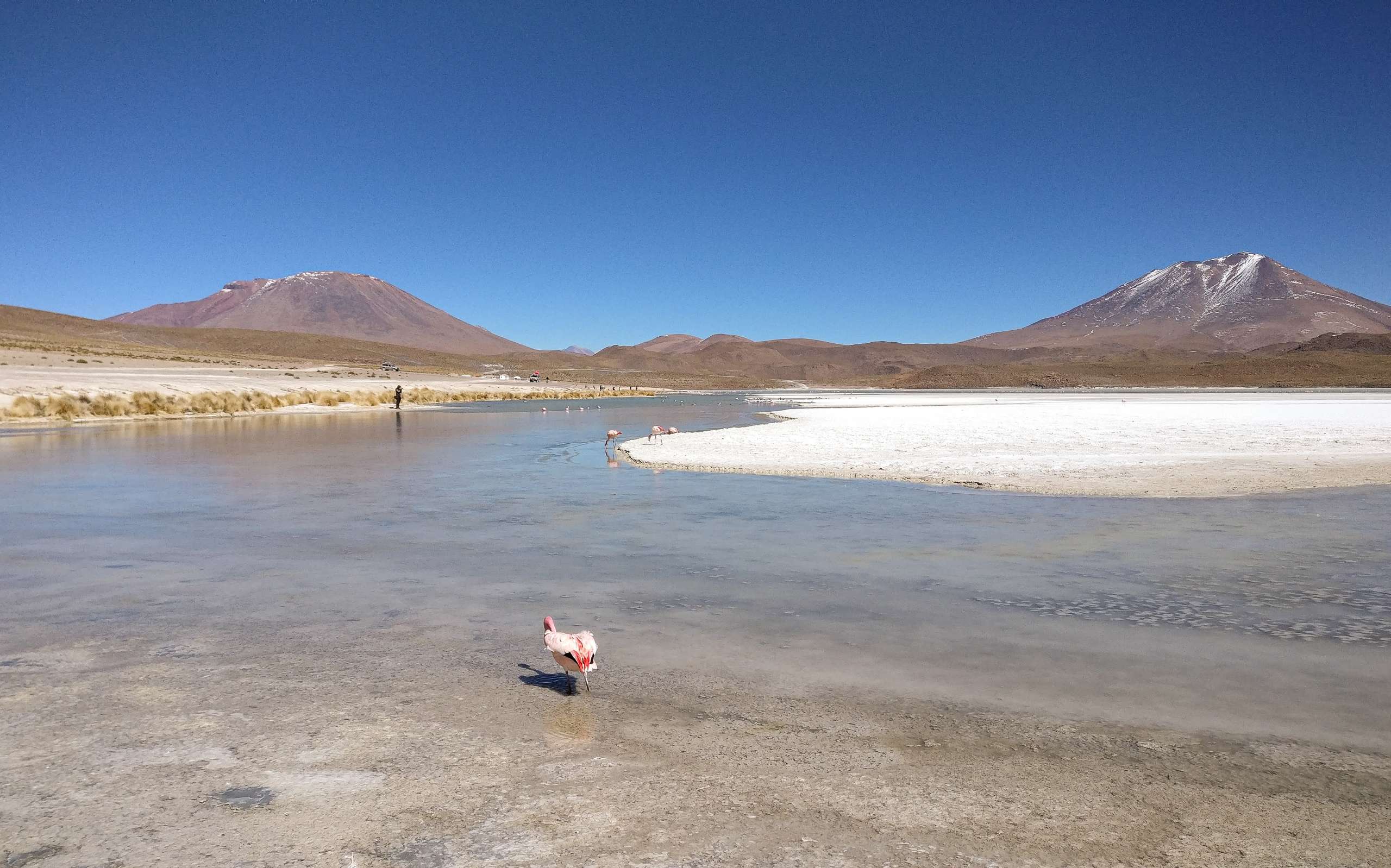
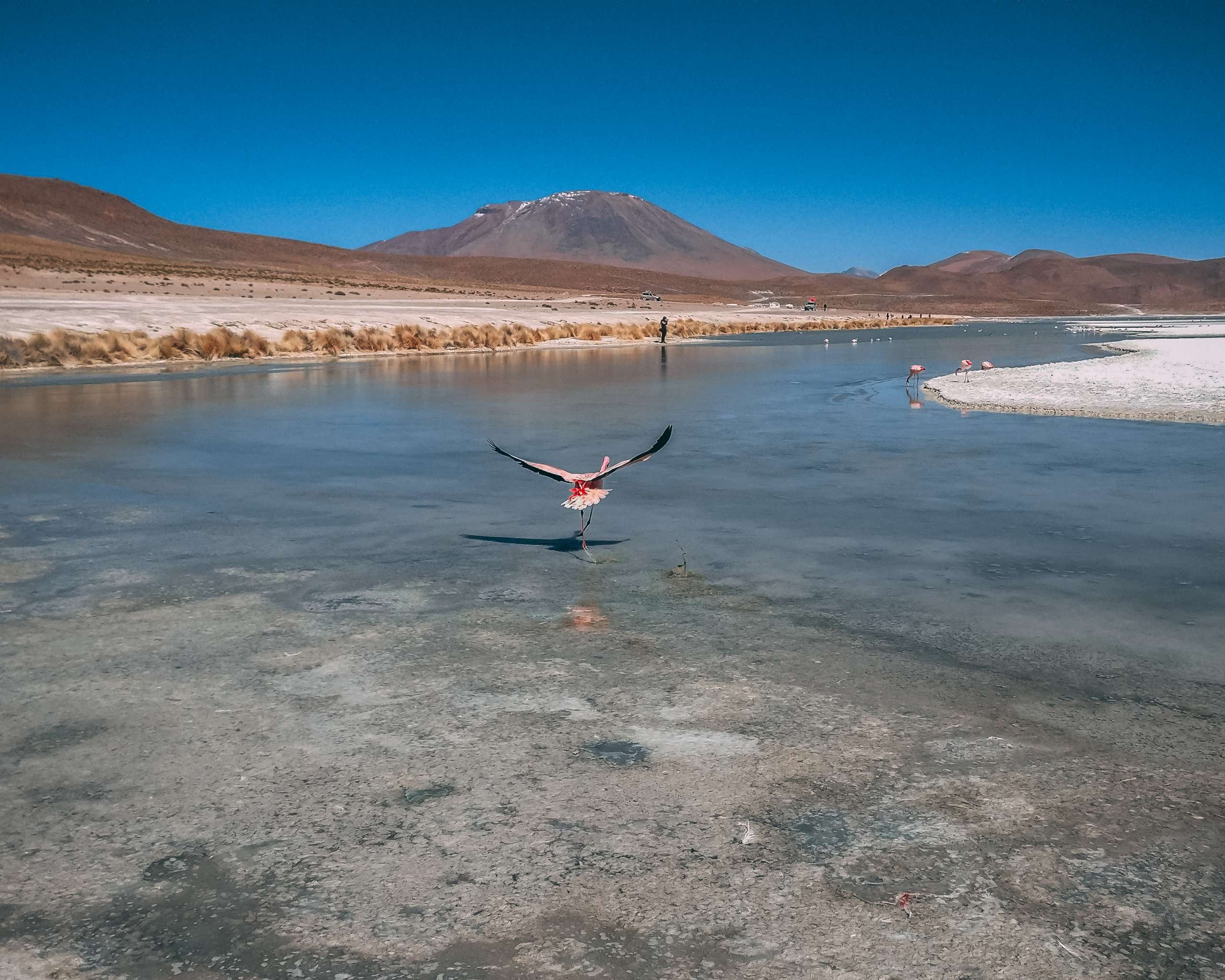
The lagoon is small in size and it is surrounded by volcanic mountains. The lagoon has very high Sulphur content. The area around the lake was surrounded by mud. I will strongly recommend to take proper hiking shoes if you are going for this trip. We got fried chicken, sausage, vegetables, eggs for our lunch. The food arrangement was excellent for the entire trip.
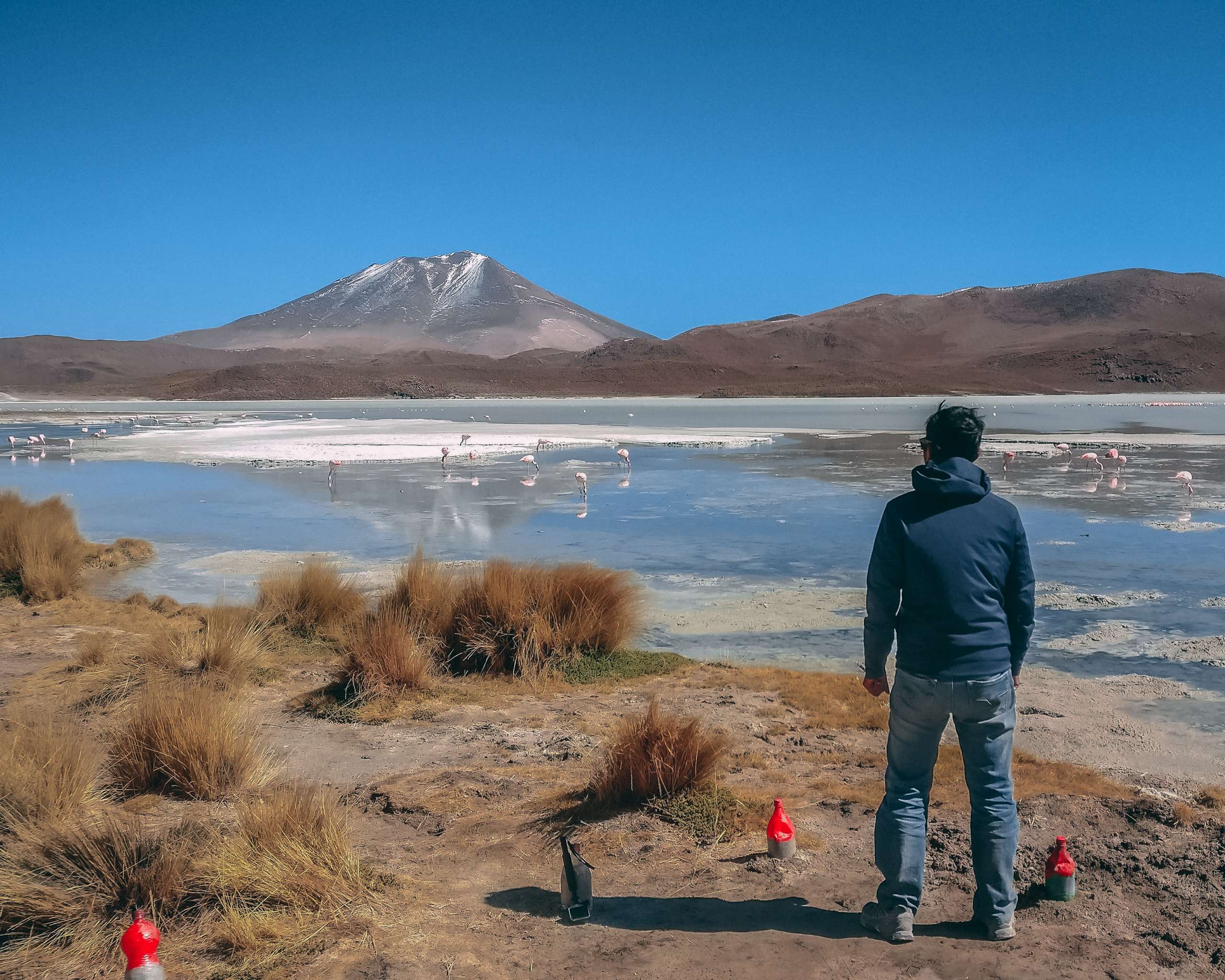
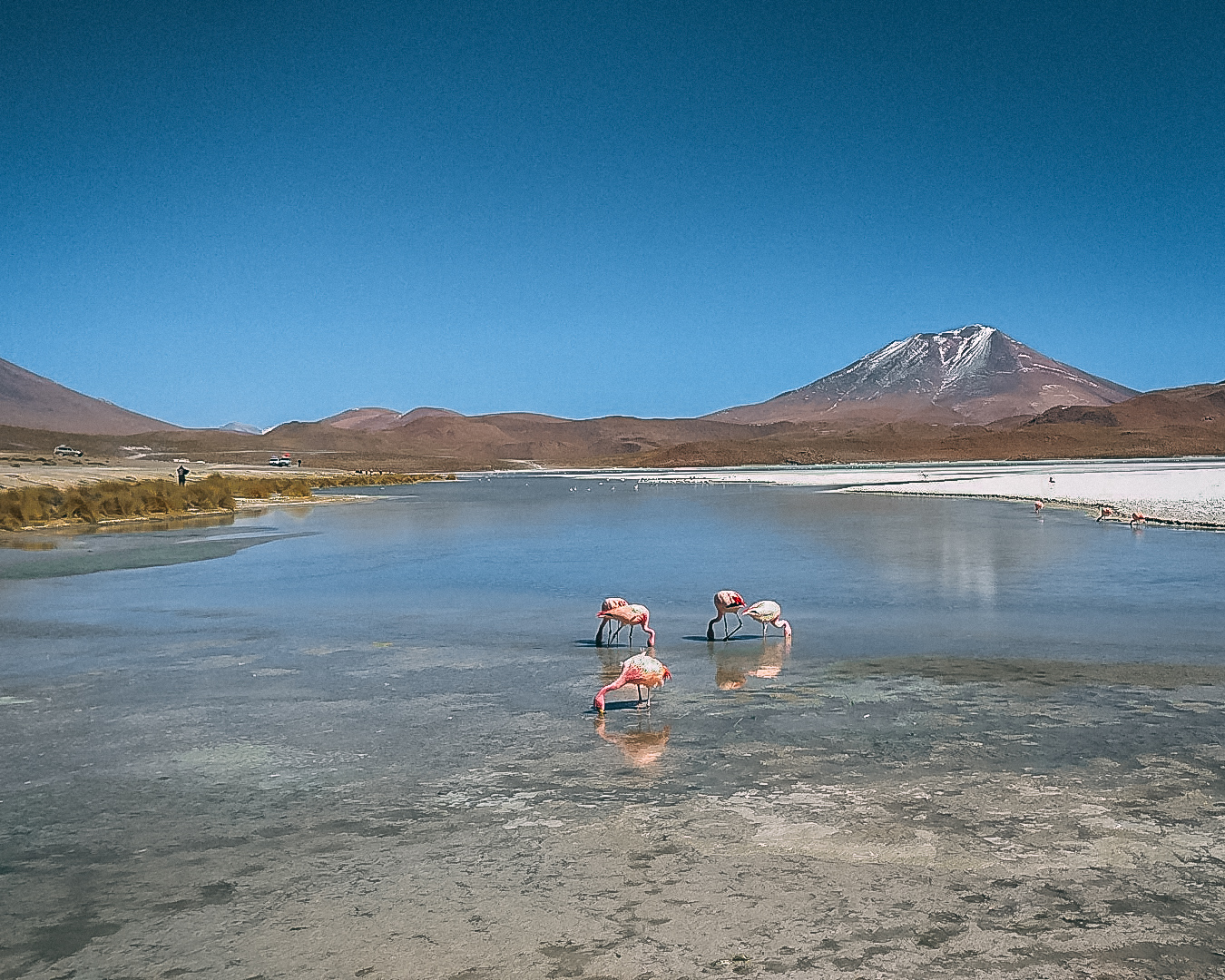
Laguna Chiarcota
We stopped at Laguna Chiarcota for about 30 minutes. The lake was light blue in color. The lake is acidic and you will not find any flamingoes around the lake. The road was situated at an elevated area and we had to walk down in order to reach the shore of the lake. Like other lagoon, Laguna Chiarcota was surrounded by volcanic mountains. The smell of Sulphur was very prominent around the lake.
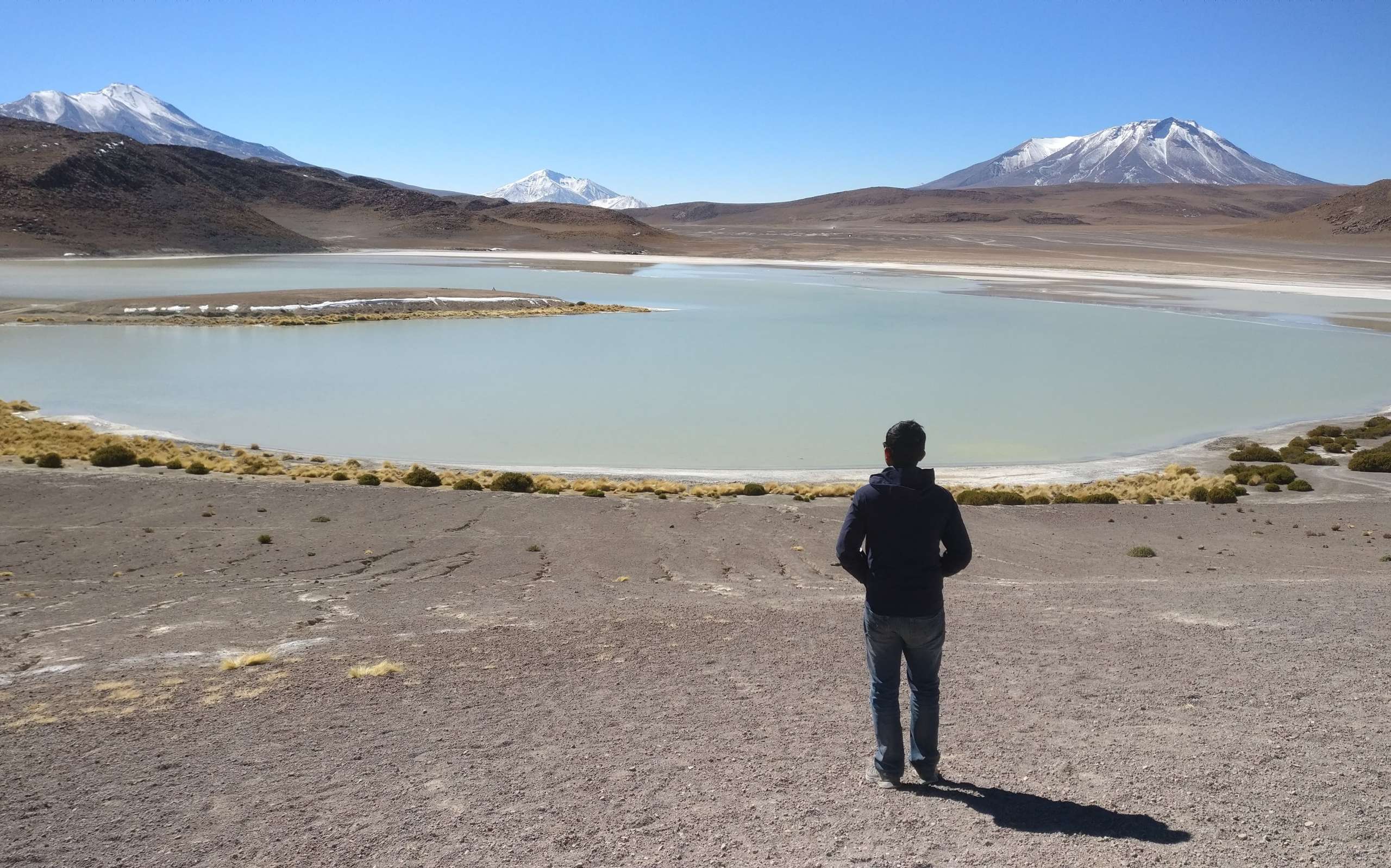
Siloli Desert
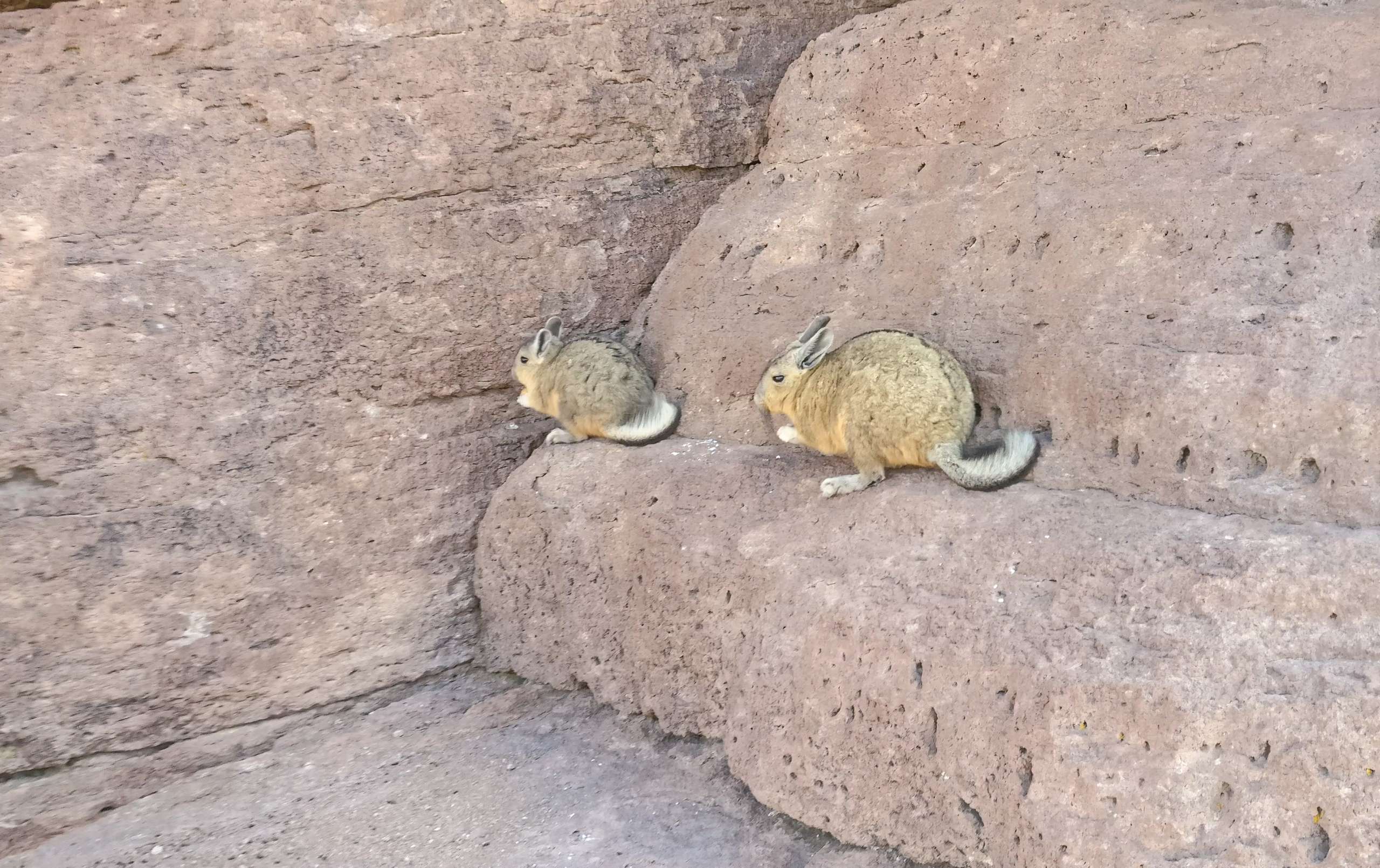
After we crossed the beautiful landscape full of volcano mountains and lakes we reached Siloli desert. The road was dirt road and all tourist vehicles were following each other in line. We spotted 4 vicunas inside the desert and the scenery was absolutely breathtaking. I asked our guide to stop the vehicle. I stepped out of the vehicle and took some nice photo of the beautiful Vicunas. I feel Vicunas are very shy animal. I saw Vicunas running when I started to walking towards them.
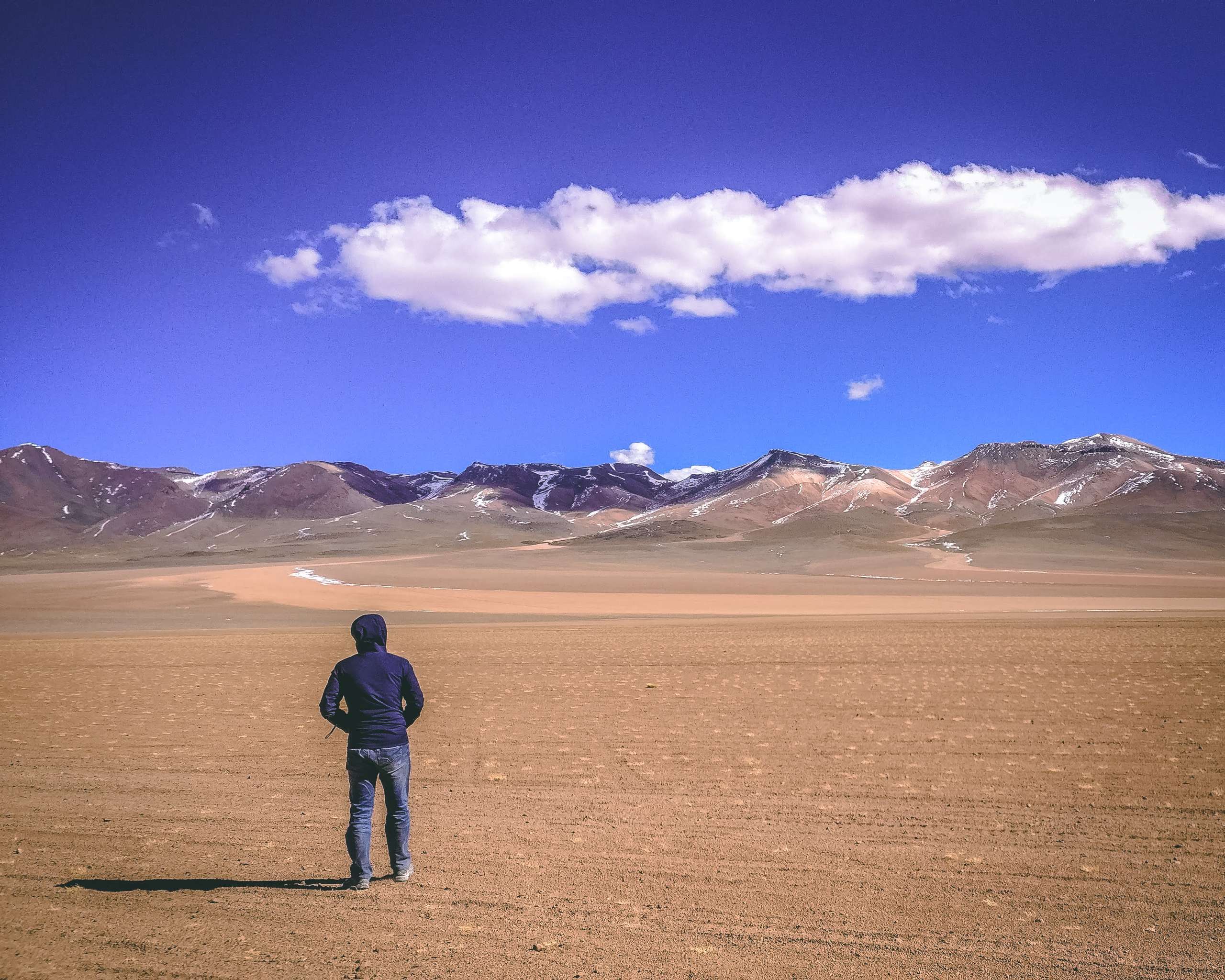
The desert is vast and it is in the middle of nowhere. The desert has a unique look because of its greyish color. It was a clear blue sky and you need to carry your sunscreen because the impact of the sun is more severe at high altitude areas. The place is also prone to dust storms. We had two stops along the Siloli Desert. We stopped near a mountain and spotted some rare Andean rabbit or Viscacha. The rabbit was dark greenish yellow in color. The rabbit feed on small insects. Our next stop was Arbol de Piedra or the stone tree. Stone tree is a popular destination in the Siloli Desert for the 3D/2N tour.
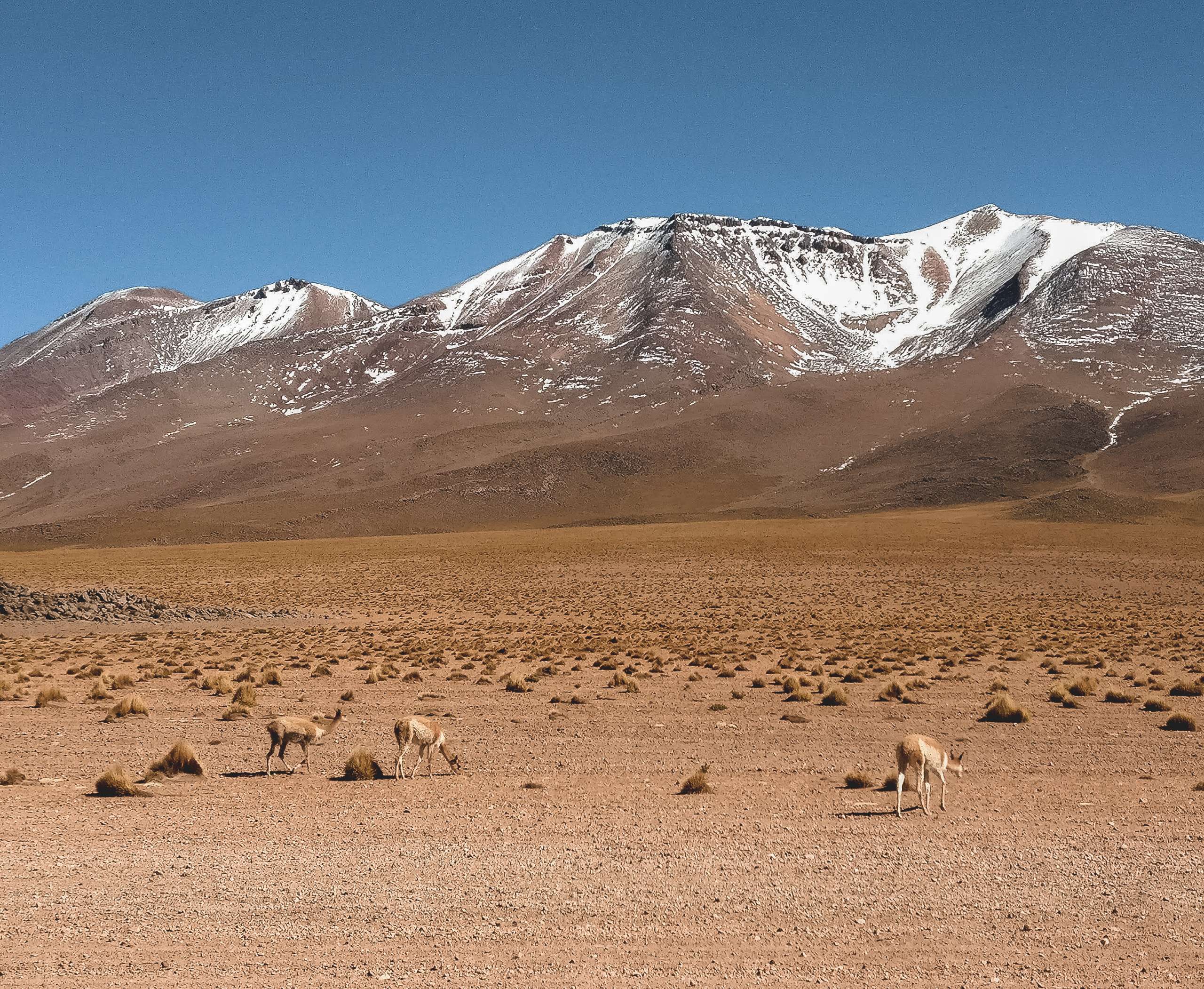
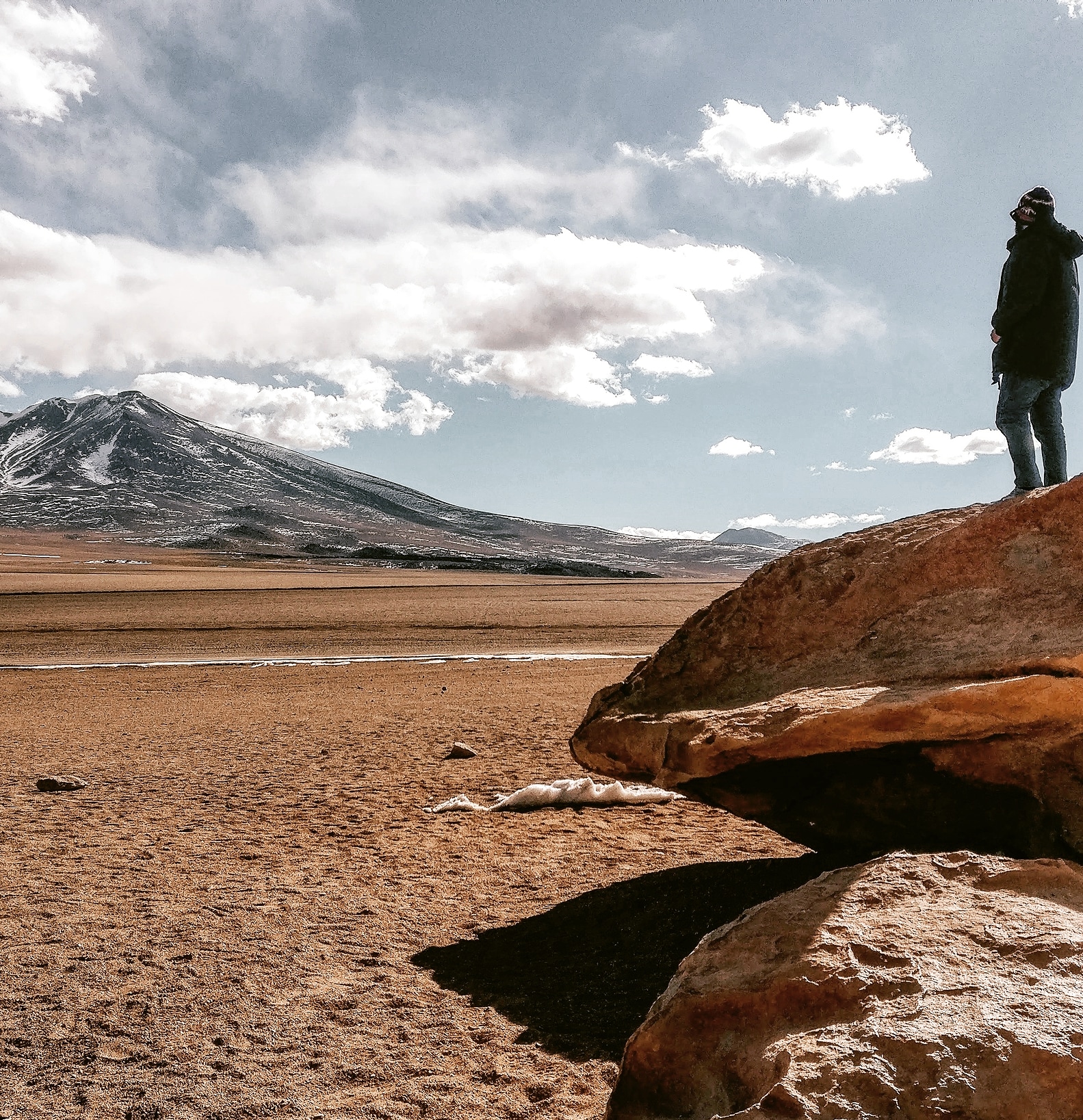
The rock formation looked like a tree because of the greater erosion at the base of the rock than the top. The higher erosion is due to the constant sand storm around the region. You can also climb up some rock formations and take some nice photos of the surrounding. You need to be extremely careful while climbing the rock formation. Any fall could be fatal because you are in the middle of nowhere. Crossing the desert was boring at some point because the scenery was repetitive. We didn’t spot any animals along the route except Vicunas and Viscacha. We admired the diversity of the landscape around the salt flat region. We hardly covered distance of 200 km but we experienced so much diversity in terms of landscape. After non-stop drive for another 1 hour we reached our final destination for the day.
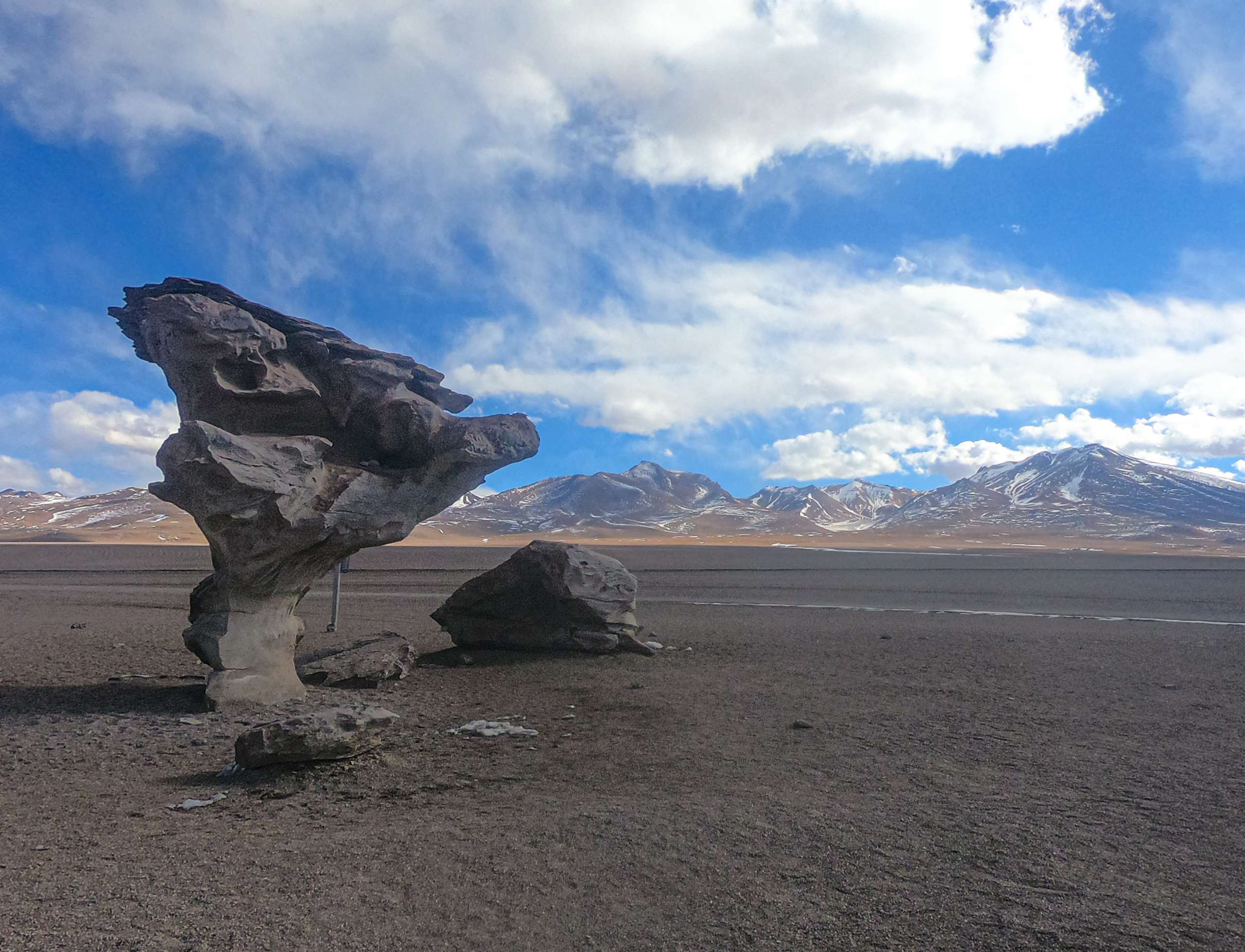
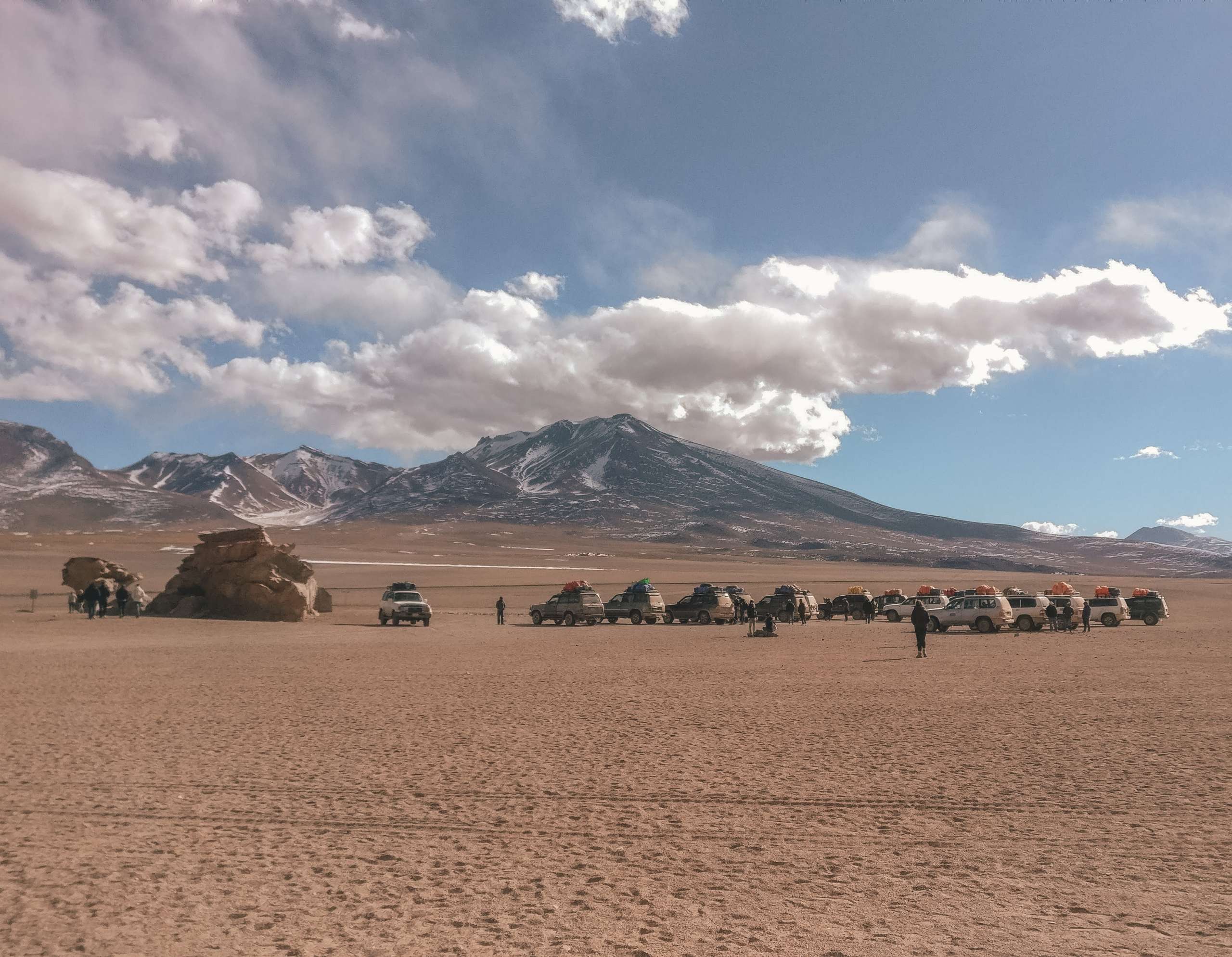
Laguna Colorada
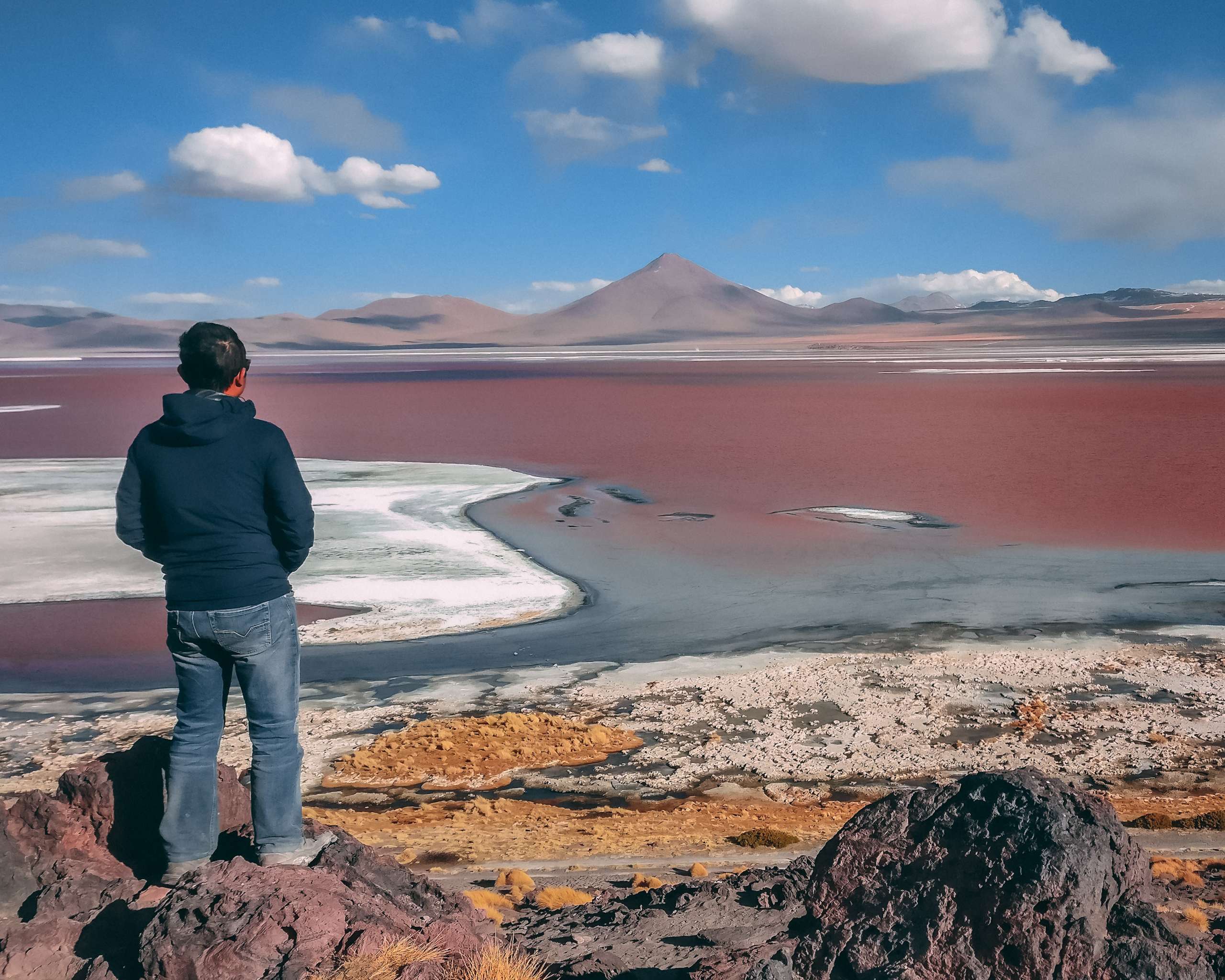
Our last stop of the day was Laguna Colorada or the Red Lagoon. The Red Lagoon is situated inside Eduardo Avaroa National Park. The entrance fee for the park is 150 Bs. The entrance fee is not included in the tour price. We had to pay our fee individually at the office. I got a beautiful souvenir stamp of the national park on my passport. Our guide told us that we traveled almost 150 km since morning. The lagoon is situated at an altitude of 4300m. The weather was very cold but there was no sign of snow around the mountain. The dry nature of the region explains the lack of snow around the mountain. The lagoon covers an area of 60km2.

The lagoon is surrounding by patch of green moss. You get the best view of the lagoon from the parking area. You can also go down and if you want to see the lagoon from close. I will not recommend to go down if you are not wearing proper hiking shoes. You can spot deposit of sparkling white salt around the lagoon. There is no proper terrain to walk near the lagoon and I saw some muddy places around the lake where you have to be careful about your step. The red color of the lagoon is because of the presence of unique minerals, algae and plankton. You will also see huge deposits of minerals such as sodium, magnesium, borax and gypsum. Around the lake minerals can be seen as white or yellow deposits. This area of Bolivia is rich in minerals. Government is trying hard to protect the area from illegal mining. The lagoon is a great place for flamingo watching. You will see different species of Flamingo like Chilean Flamingo, Andean Flamingo and James Flamingo during your trip to the lagoon.
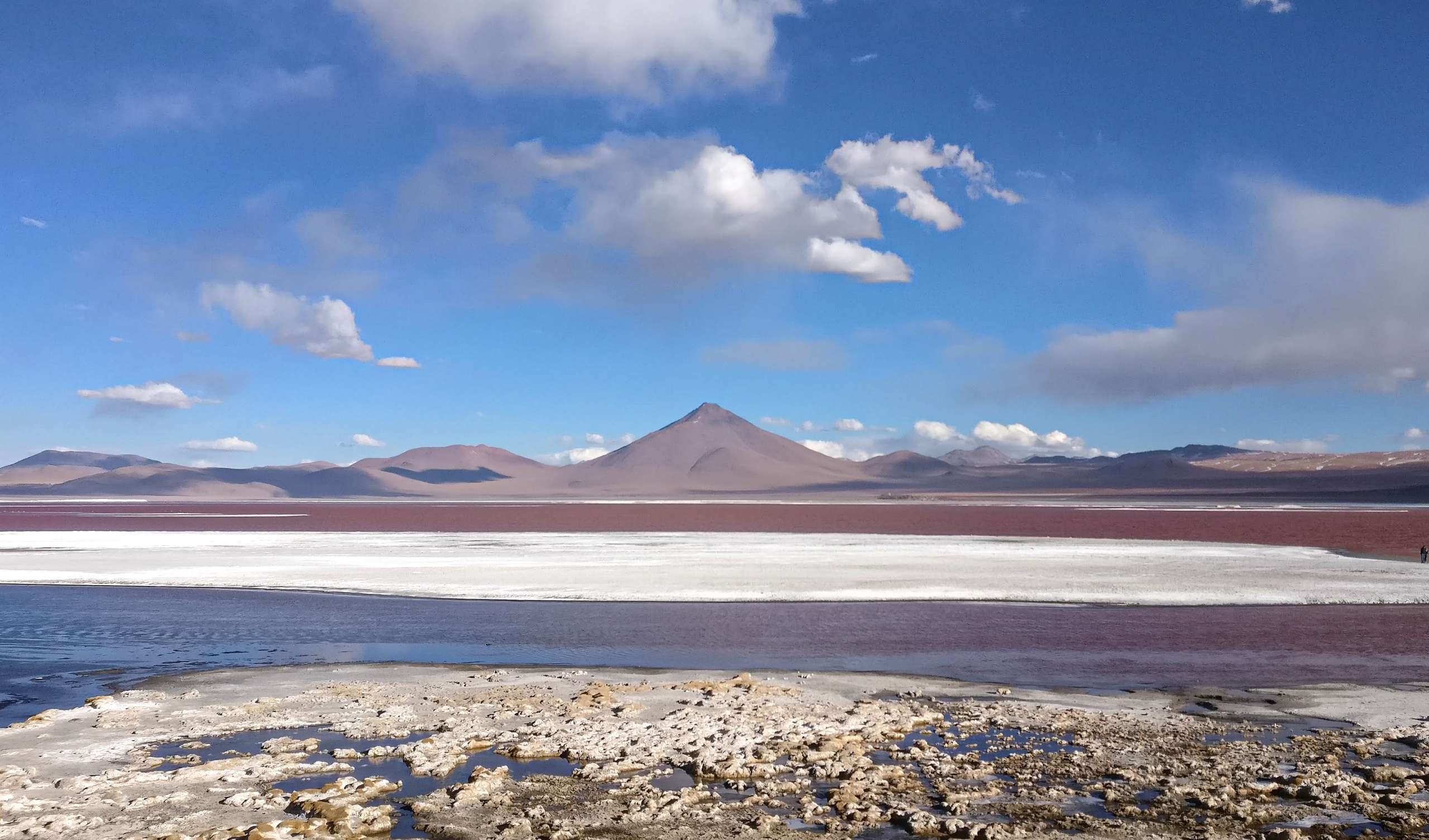
Our accommodation was arranged at the small town of Huayllajara. The town was built for tourism purposes. The town is located very close to the main entrance of the National park. The town consists of small dormitory style rooms and small bars. All of us shared a single hall type room. There were six beds inside the room and each of us received a sleeping bag. Sleeping bag is necessary because it is very cold and there is no heater inside the room. The accommodation was very basic for the 2nd day. We got vegetables, beef steak and fries for our dinner.
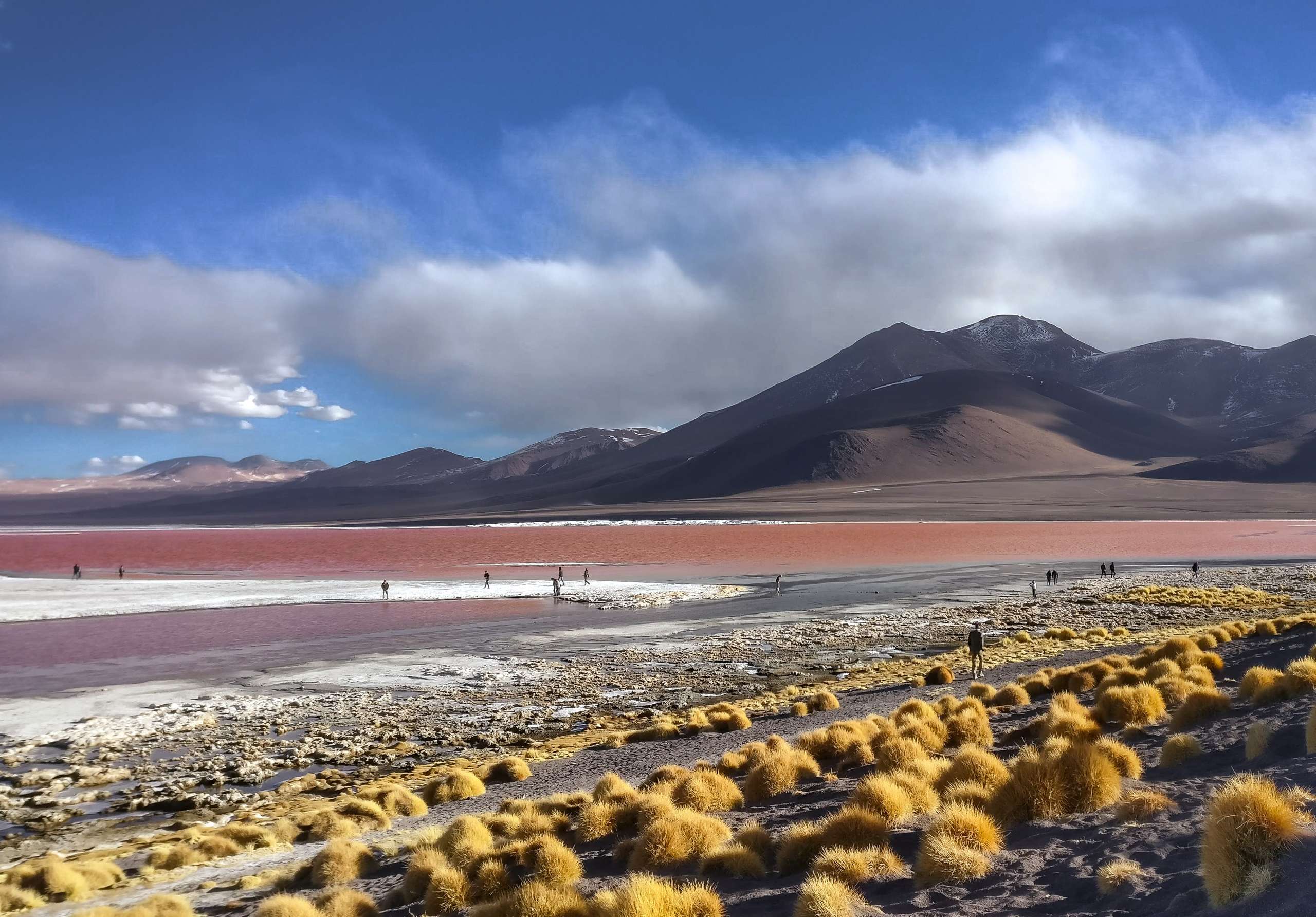
The weather was very cold that night and the temperature was well below zero. There was no trace of clouds in the sky and the visibility was amazing for star gazing. Don’t forget to bring your high end cameras if you are planning to take some nice photographs of beautiful star studded night sky. Four of us went to a nearby bar and played some nice card games. We ordered 3 bottles of wine and spent around 3 hours at the bar. My friend from Paraguay taught us a beautiful strategy game and we all fell in love with the game. We came back to our accommodation at around 10pm. It was completely dark and initially we couldn’t find our accommodation but eventually we found our accommodation because we managed to spot our car parked near the entrance.
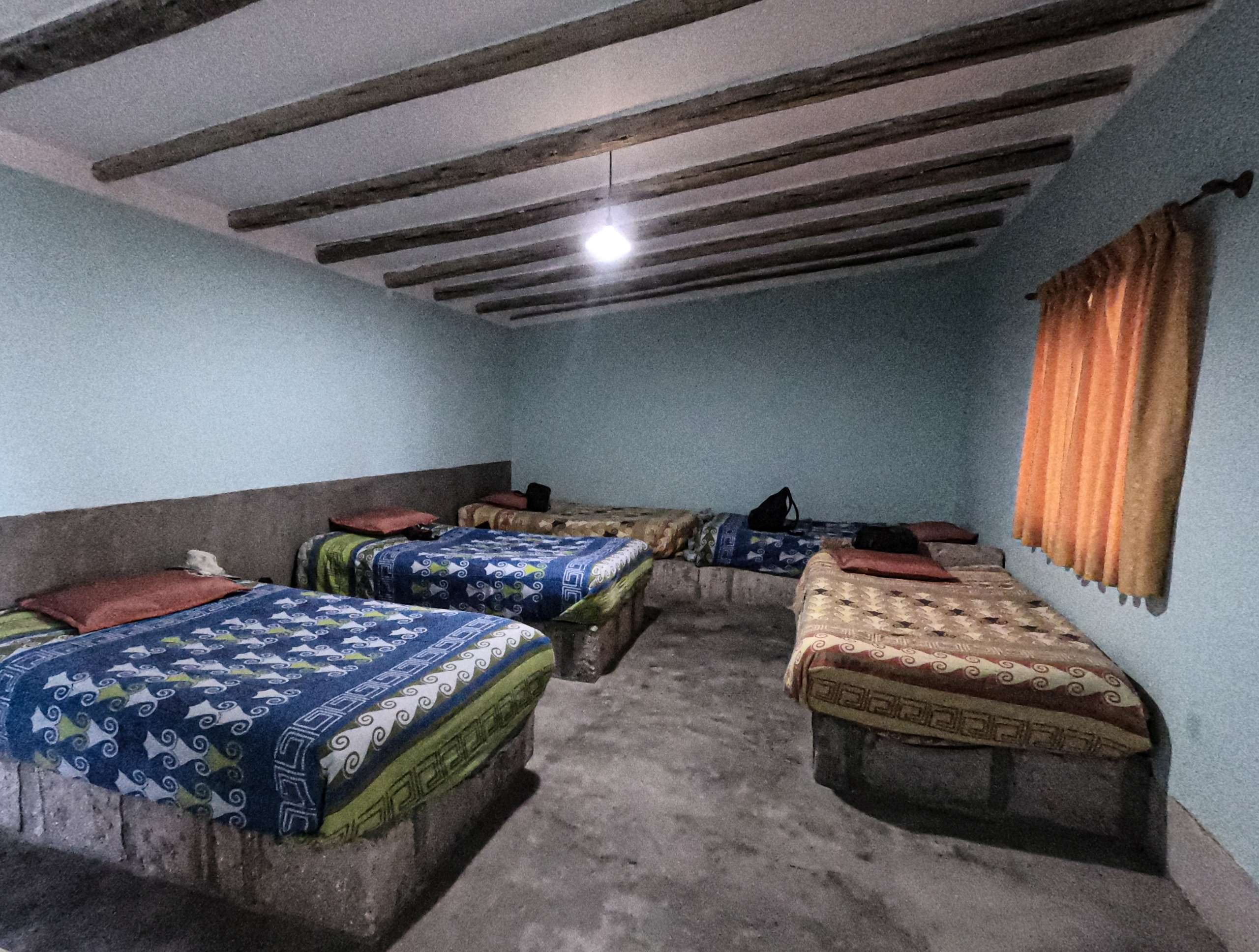
Day 3
This was our last day of the trip. We had to wake up at around 5 am in the morning. We started the trip early because we had to reach the border of Chile and Bolivia by 11 am. In our tour group 2 persons were going towards chile and four of us were coming back to Uyuni. It was freezing cold in the morning. I checked the temperature and it was -15 C. This was the lowest temperature ever experienced by me. There was no sign of snow because it is situated near the Atacama desert which is the driest place of the world.
It was completely dark outside. The torch was handy. We loaded our stuffs on the top of the car and started our trip. Our first stop was Sol de Mañana which is a Geyser volcanic zone. The zone is situated at an altitude of 4850 meters. We saw boiling steam coming out from a small crater. The steam goes up to height of 50 meters. There are number of mud lakes and steam pools around the region. I don’t like the smell of Sulphur so I didn’t go too close to the crater. My friend went to the crater and he was able to see boiling lava. We waited there for sometime and saw the beautiful sunrise over the Andean mountain. The mountains were looking yellowish orange in color because of the deflected sunlight.
Hot Spring
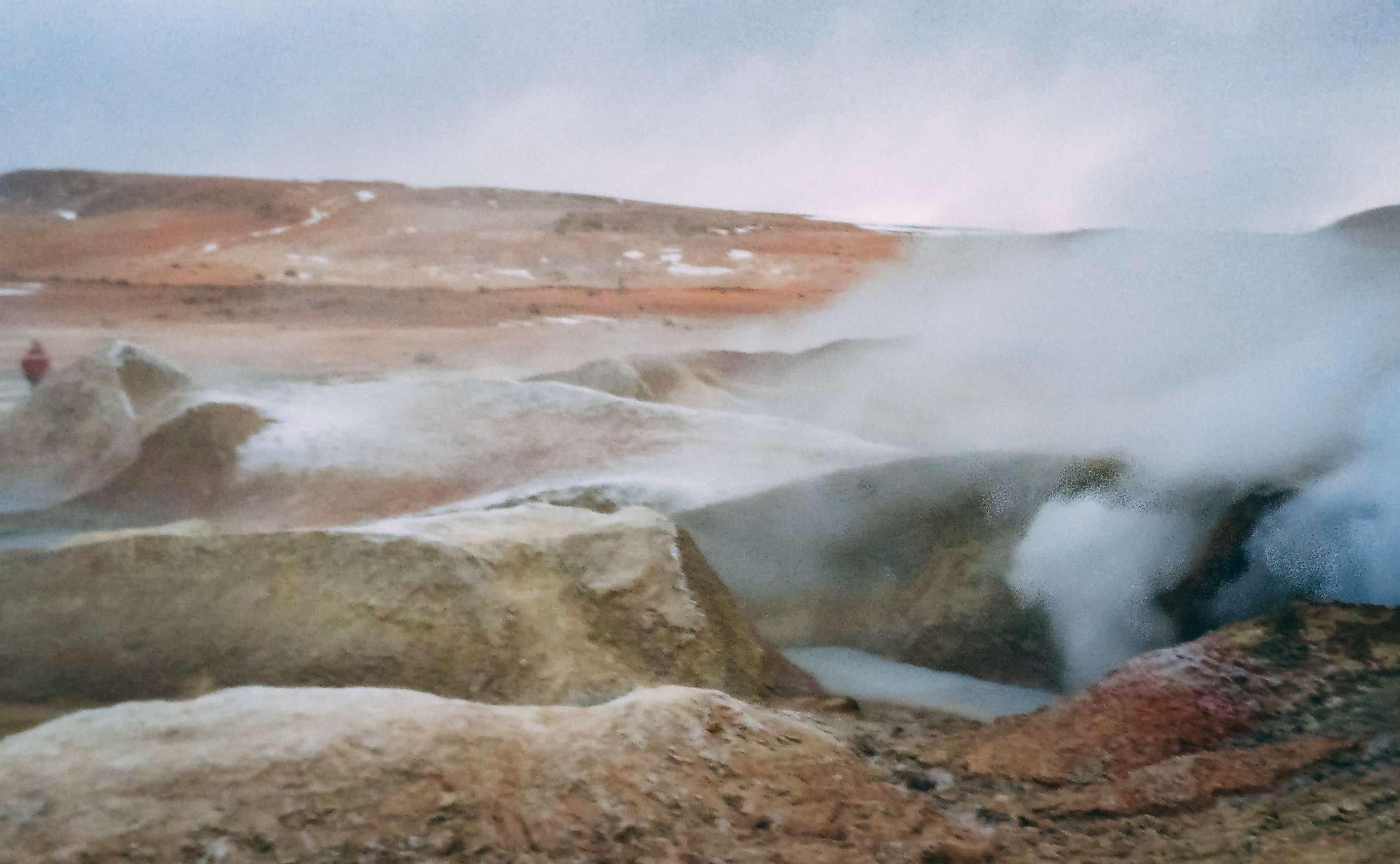
We stopped at a hot sprint on our way to Laguna Verde. There was no proper changing room or shower facility at the hot spring. The Blue lagoon near the hot spring was full of flamingoes. It was freezing cold outside and all of us in our group decided not go inside the hot spring. This was also the highest point of our trip. The hot spring was crowded with lot of people. The entrance fee for the hot spring was 10 Bs.
Laguna Verde
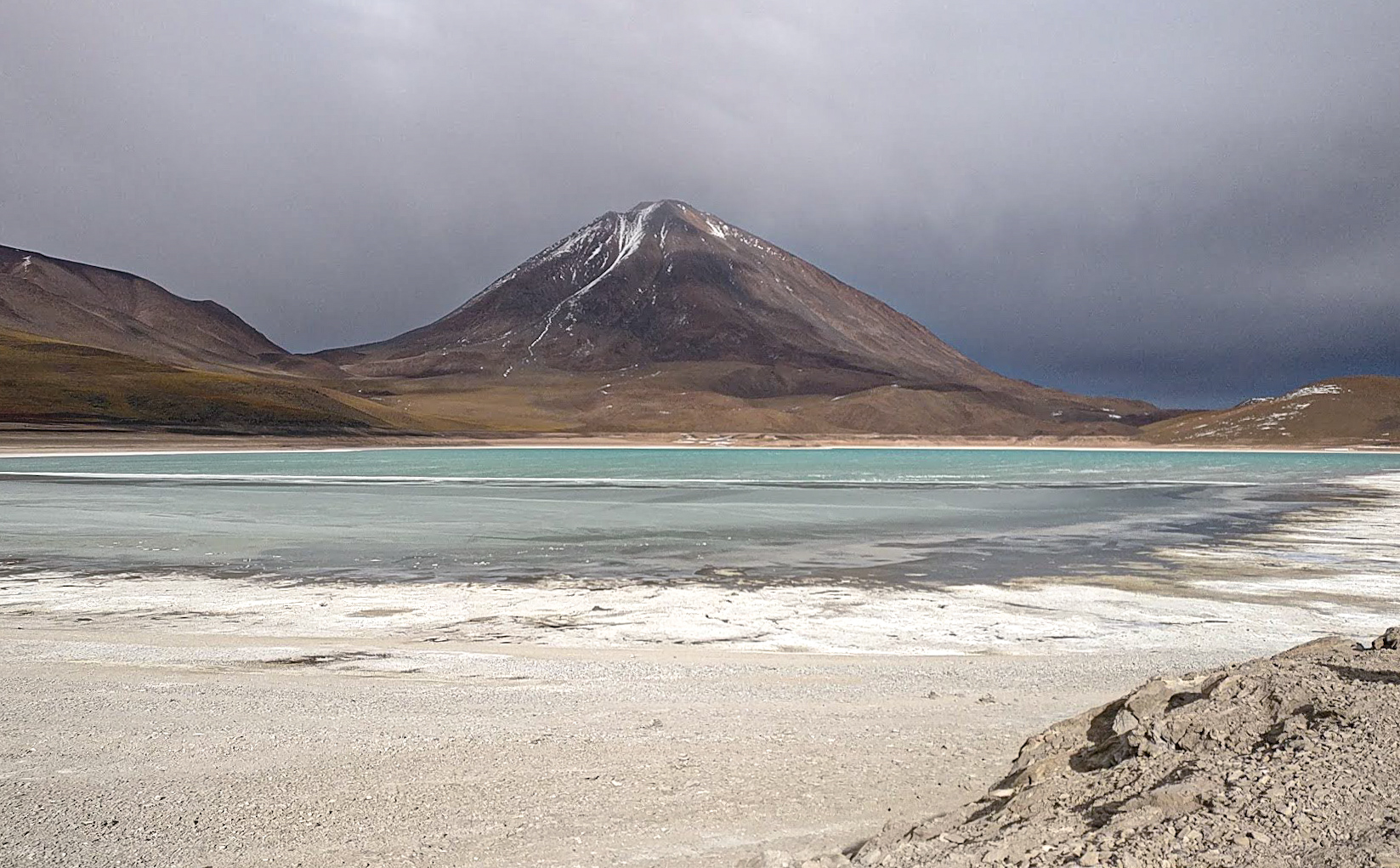
Laguna Verde was the prime attraction of our day trip. I was completely awestruck by the beautiful green color of the lake. The green color of the lake is due to high concentration of lead, Sulphur, and calcium carbonate. The green lake is heaven for Instagram shots. We took some nice shots on the background of the Green lake. We wanted to spend more time at the lake but the weather was cold and windy. The lake is situated at the base of Licancabur Volcano. The height of the volcanic mountain is 5900 m. I was completely shocked to see no snow at the top of the mountain. It is undoubtedly the most beautiful lake I have ever see. You will not see any flamingoes on the lake because of the high acidic concentration. Laguna Verde on the background of Lincancabur volcano is one of the most photographed places in Bolivia.
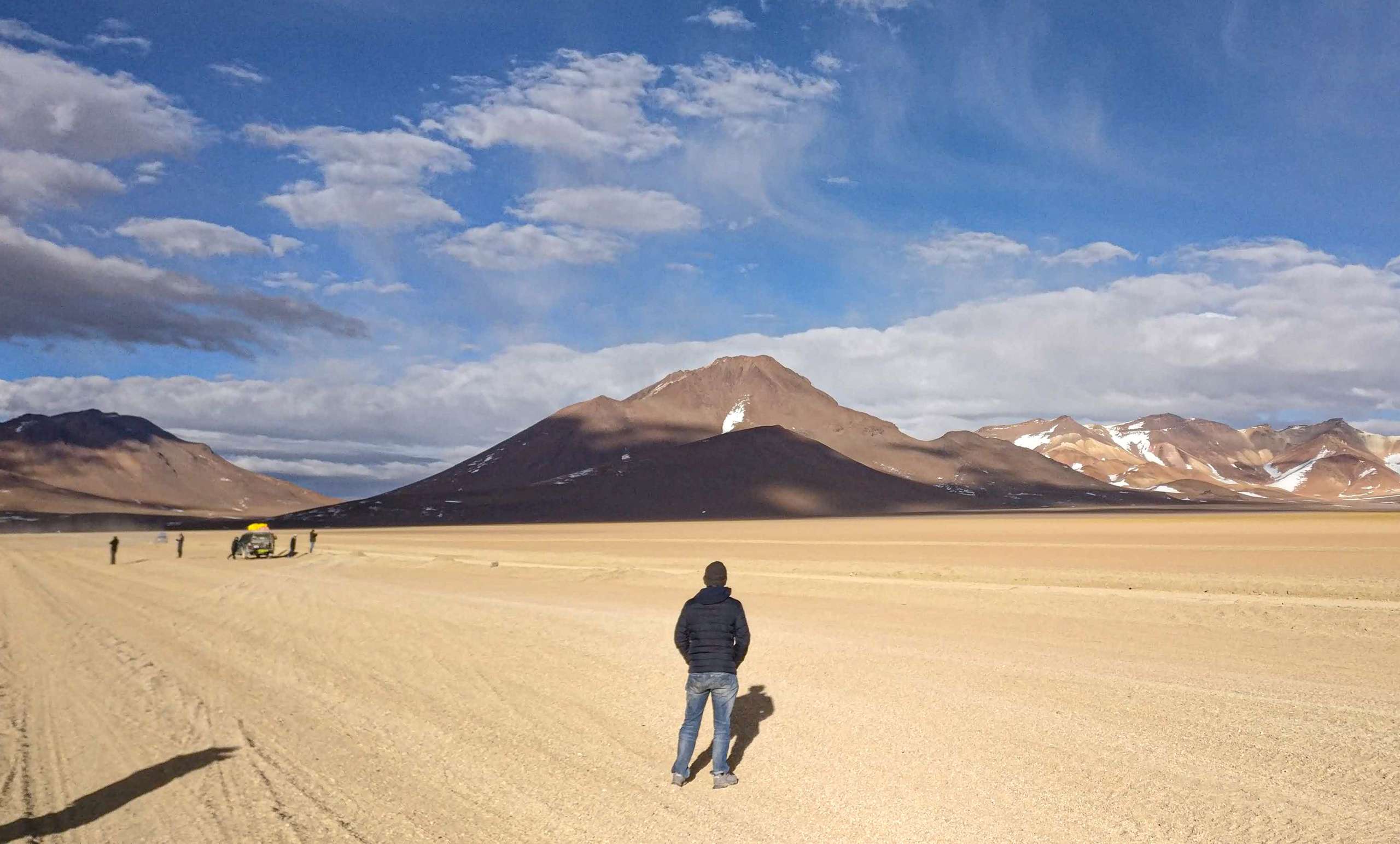
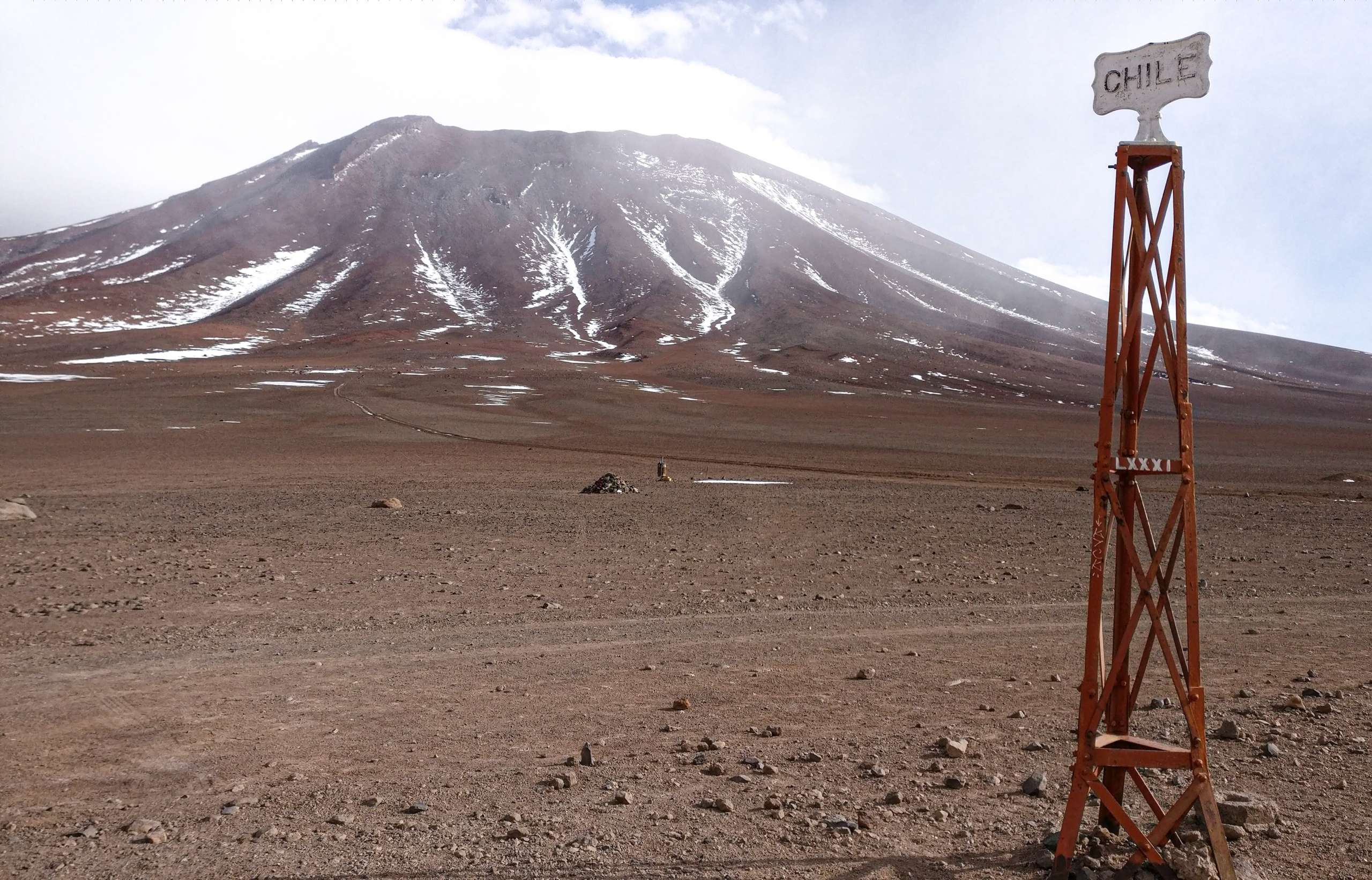
On our way to Chile border we crossed Salvador Dali Desert. The landscape of the desert was out of this world. We stopped for 20 minutes and took some nice photographs of the beautiful landscape. We reached the Bolivia-Chile Border at around 11am. We stopped for 30 minutes at this location. We took some nice photos of our group. San Pedro de Atacama is just 1hour bus ride from this place. We said goodbye to two French travelers going towards Chile. They were traveling South America for 3 months. After dropping two passengers from our group we started our journey back to Uyuni.
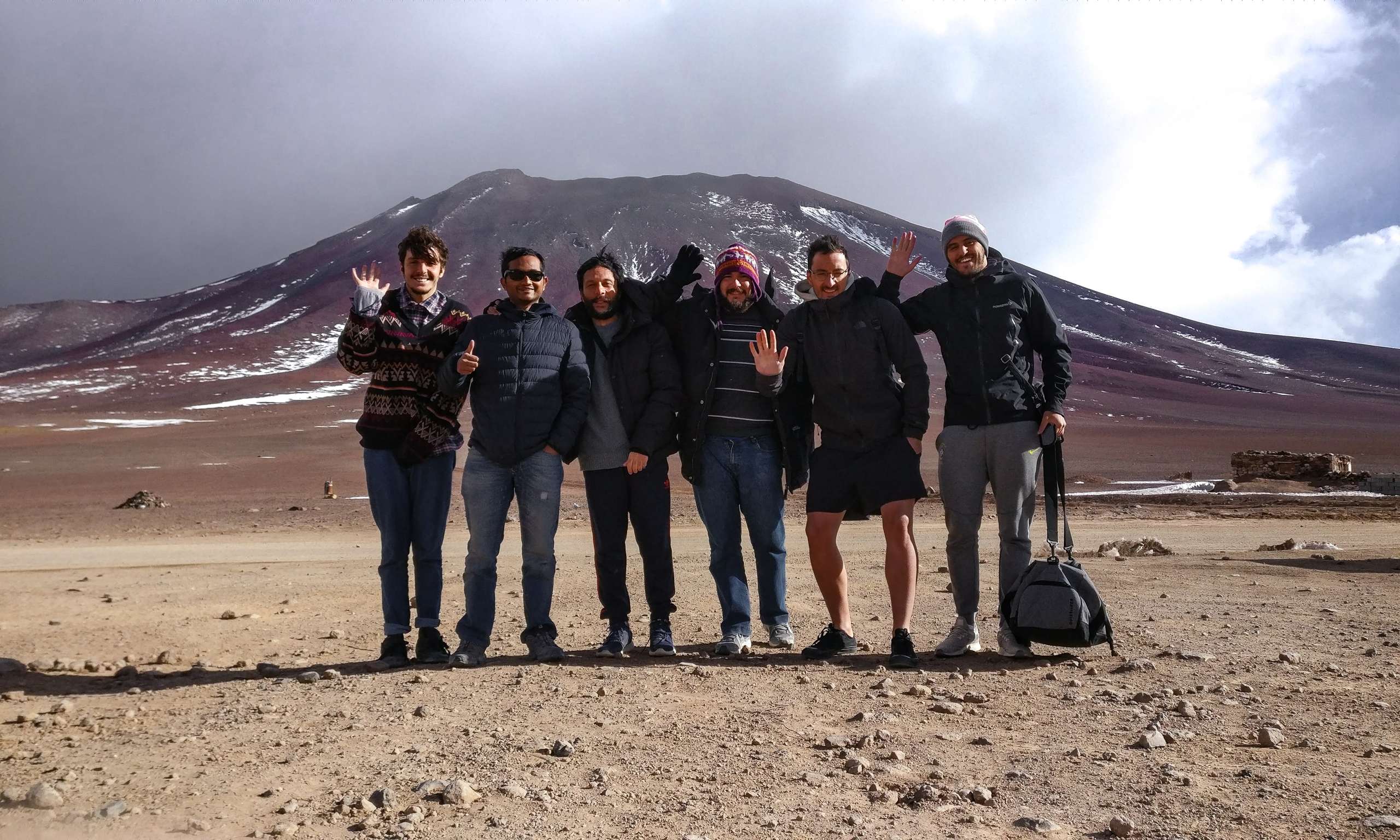
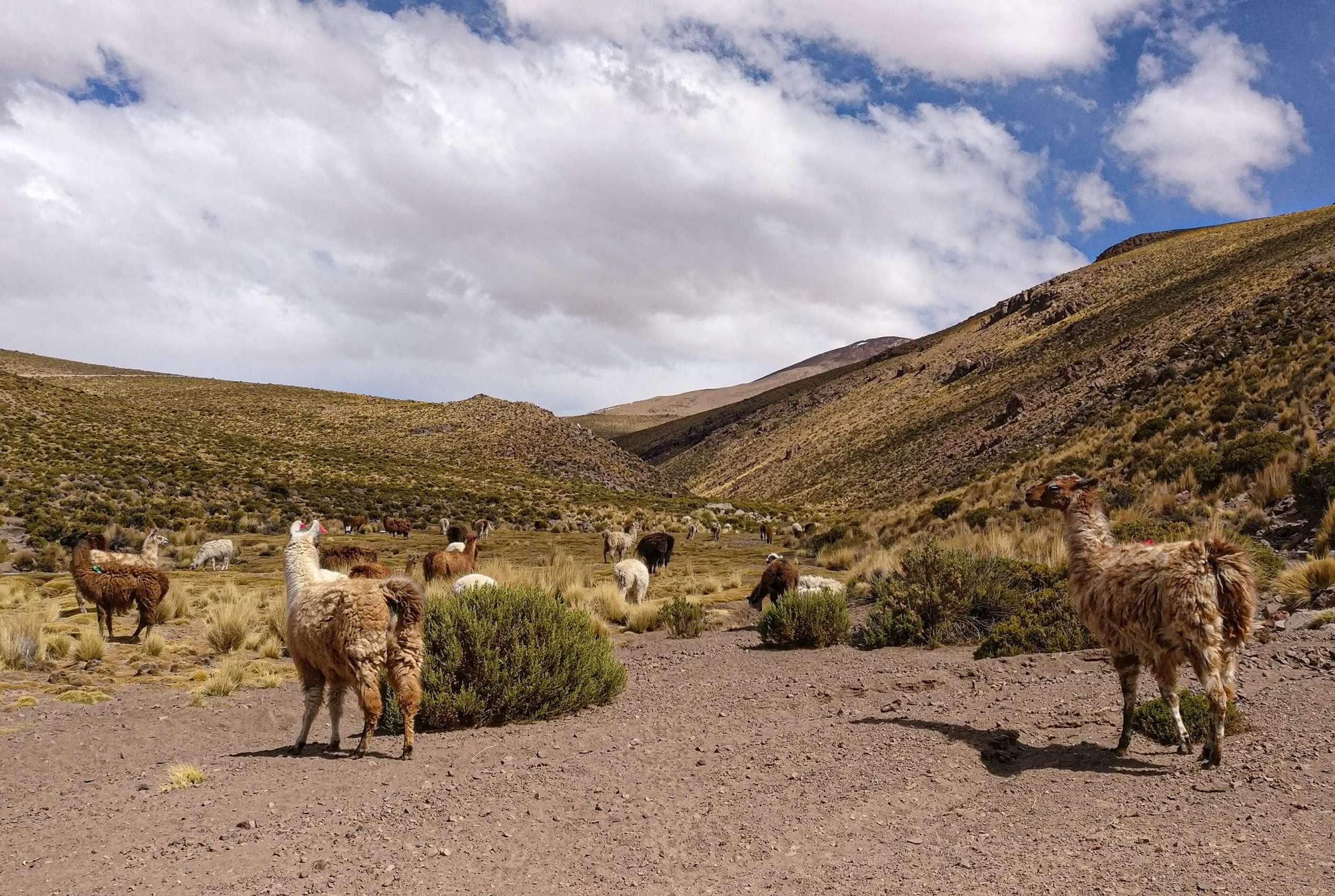
We drove non-stop for around 2 hours through Dali Desert. It was paved road and there was lot of dust. We closed our windows and took some nice nap. I feel tired during this part of the journey. I took Dimox in order to reduce chances of getting altitude sickness. I was feeling light headache. I strongly recommend to bring extra 3 litre water during your trip to Uyuni. Drinking water helps a lot in reducing the symptoms of altitude sickness. 3D/2N trip is just perfect for visiting Uyuni. I am glad that I didn’t take 4D/3N tour because it would have been very tiring. On our way to San Cristobal town we stopped at Catal River Canyon. Catal River Canyon is a small canyon. We stopped our vehicle near the canyon and walked inside. There were number of Alpacas and Llamas near the narrow stream of water flowing through the canyon. It was a good spot to take some nice photographs.
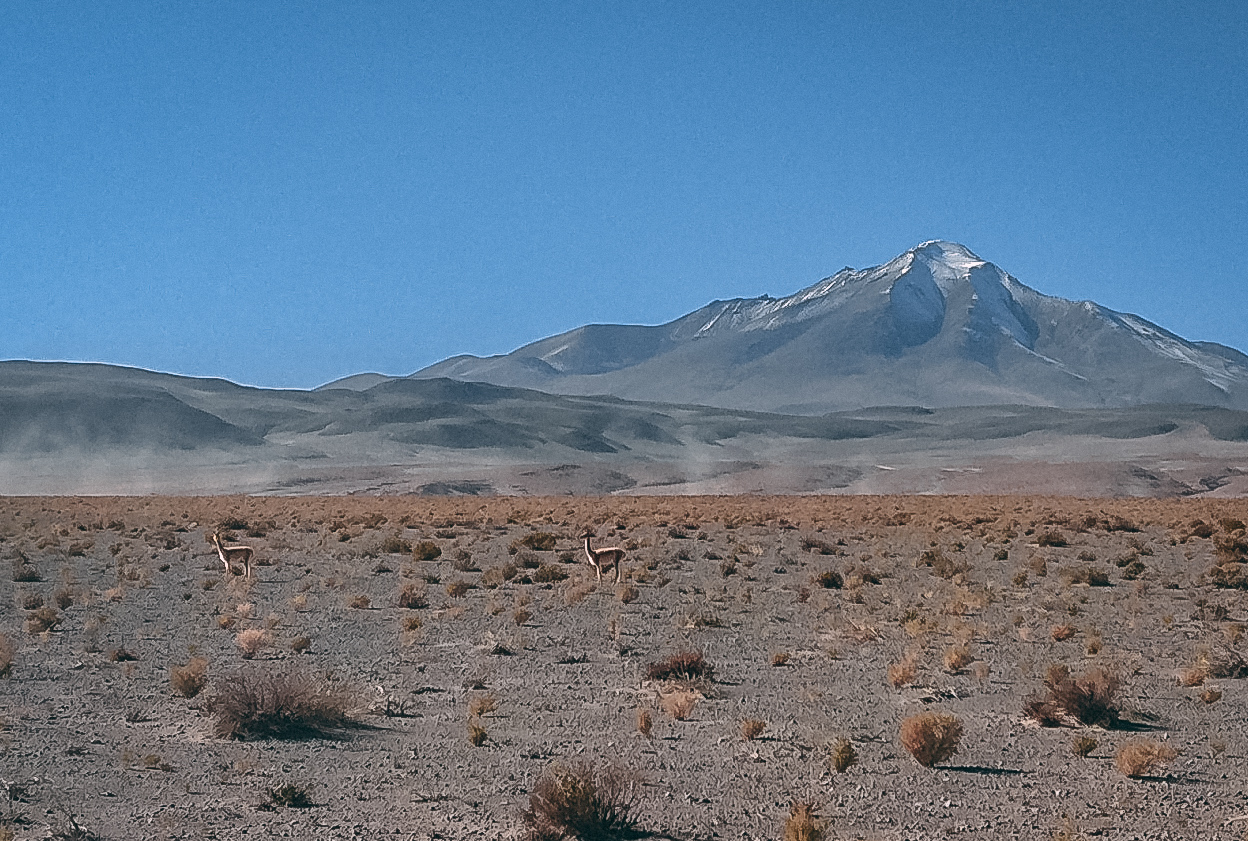
We arrived at San Cristobal town at lunch time. We had nice prawn rice, vegetables and fries for lunch. Throughout the tour I really loved the quality and the quantity of the food served. There is no need to bring any extra food with you during the trip. San Cristobal town is a very small town in the middle of nowhere.
Villa Alota
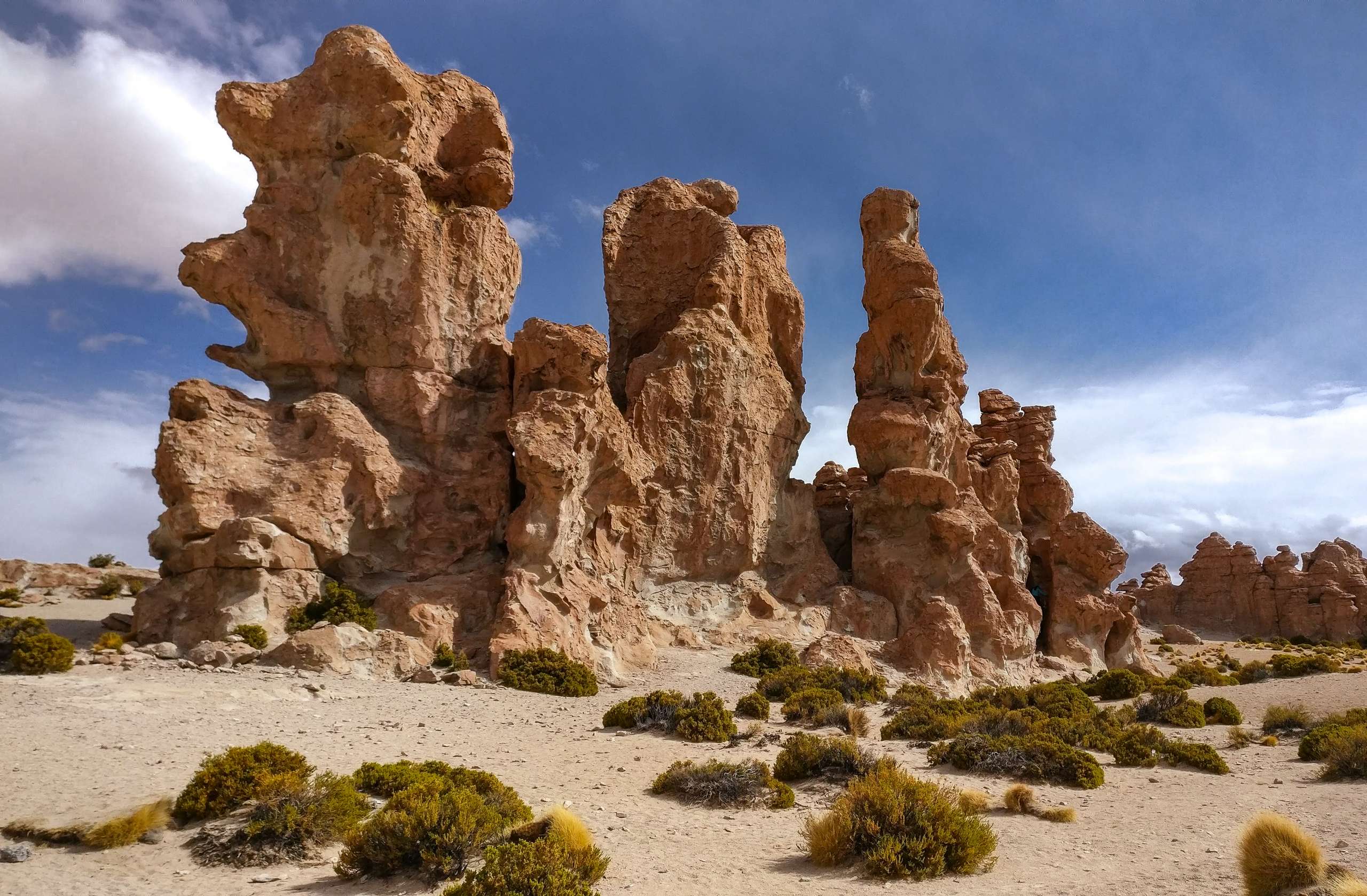
On our way to Uyuni we traveled through Villa Alota. The landscape was beautiful but it was windy and visibility was low because of dust. We stopped at Valley of Rocks for 30 minutes. The place is situated near lagoon Vila Mar and it is popular for unique rock formation. We got off the car and started taking some photos. After spending 10 minutes at the rock formation we had to get back to our car because it was too windy and we had to cover our face. Uyuni was another 2 hours drive from the valley of rocks. I was very tired at this point of time and just wanted to have a good sleep.
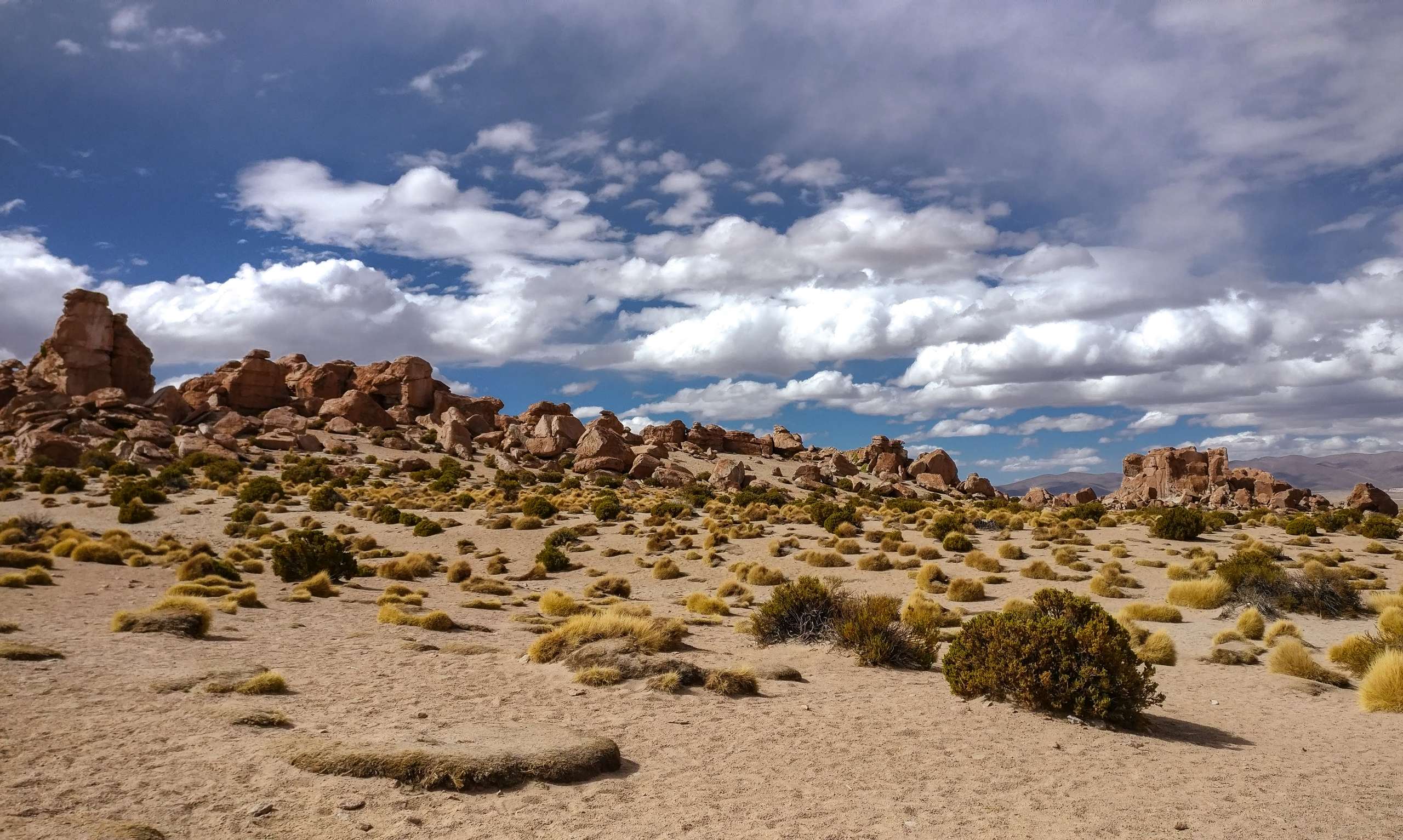
We reached Uyuni at around 5 pm. Our driver/Guide senor Gregor was very friendly and knowledgeable. He dropped us at the main bus stop of Uyuni. Some of us were leaving for Potosi in the 6pm bus. I decided not to take night buses in Bolivia because night bus ride in Bolivia is not safe because of the number of accidents. I stayed at Uyuni for one night and traveled to Potosi the next day.
Overall it was an epic 3D/2N trip. The trip arrangement was just perfect. We didn’t have to worry about anything. I will strongly recommend everyone to do this trip if you are coming to Bolivia. The tour was priced very reasonably and It was completely worth every penny you spent. This trip will undoubtedly become highlight of your traveling career.
You will see long list of items required for this trip at different website. If you are traveling light then I will recommend you should definitely bring these 5 items during the trip.
Packing Items
- Torch
- Power Bank
- Water 3 litre
- Sunscreen
- Day pack bag
- Winter Jacket

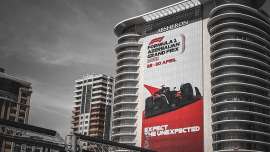
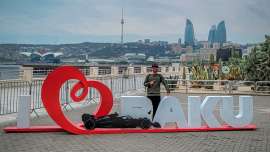
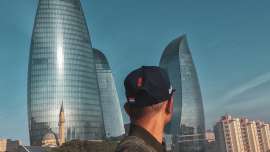
Leave a Reply